

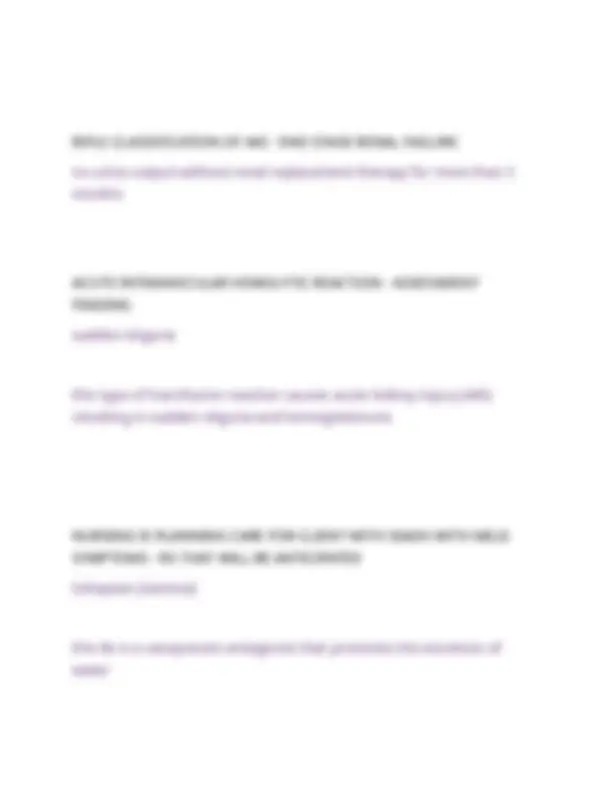
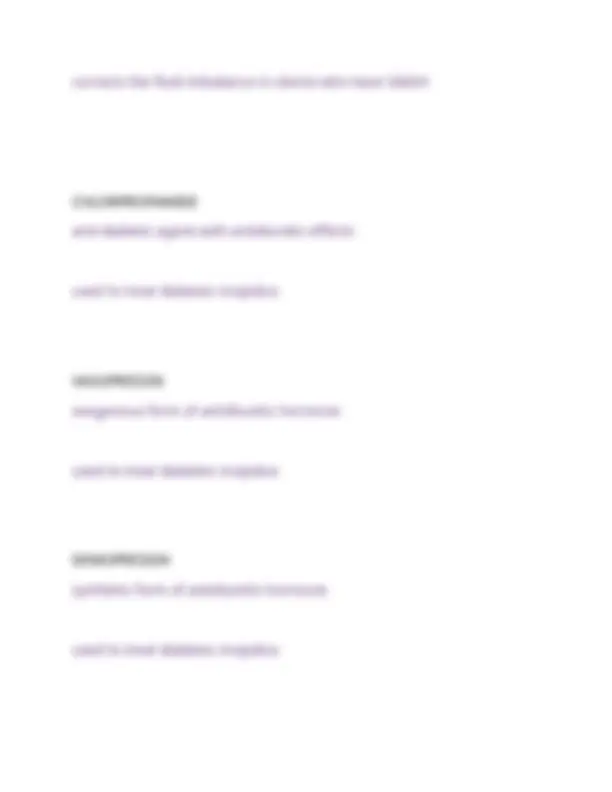
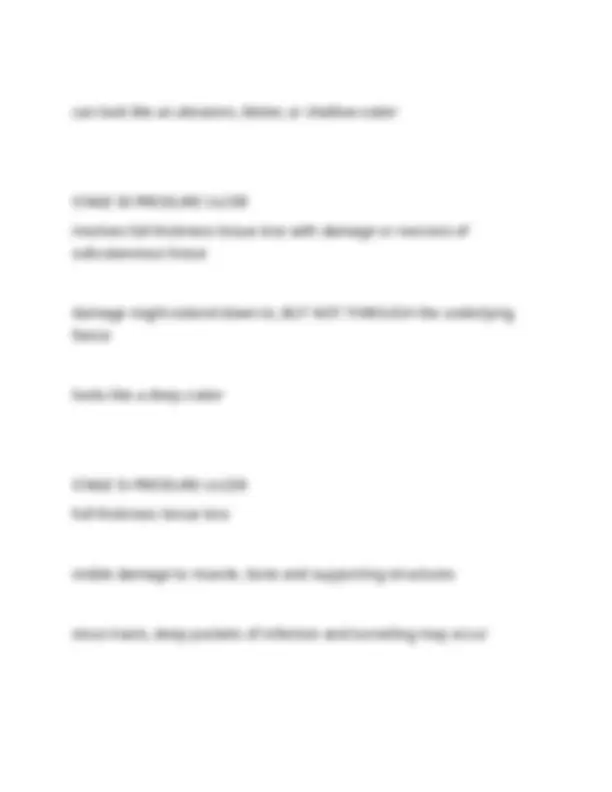
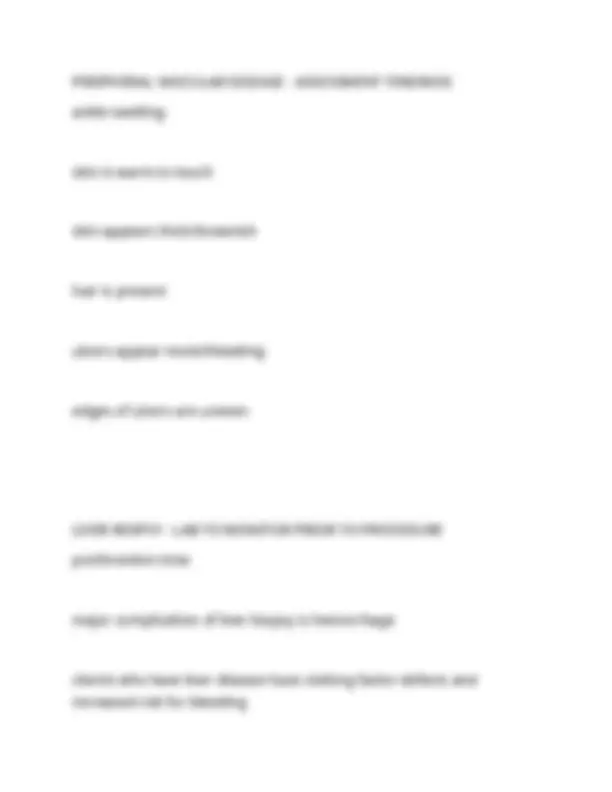
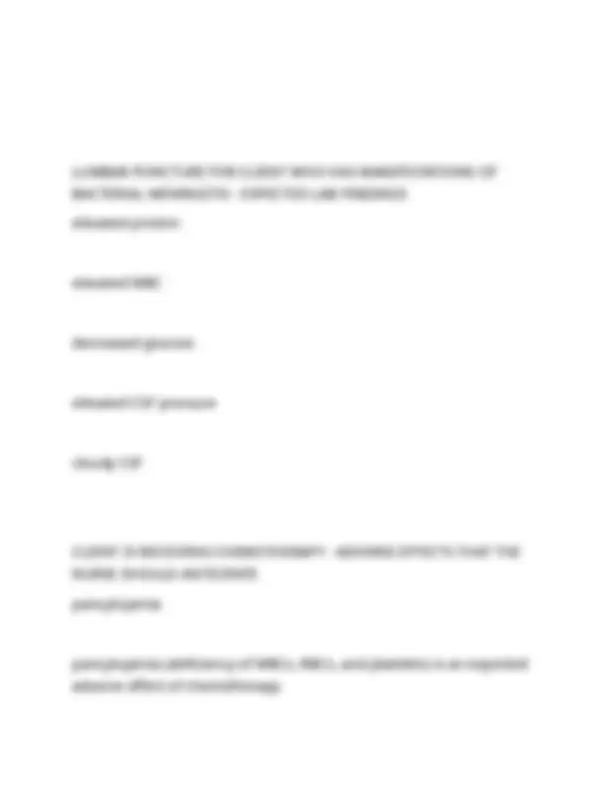
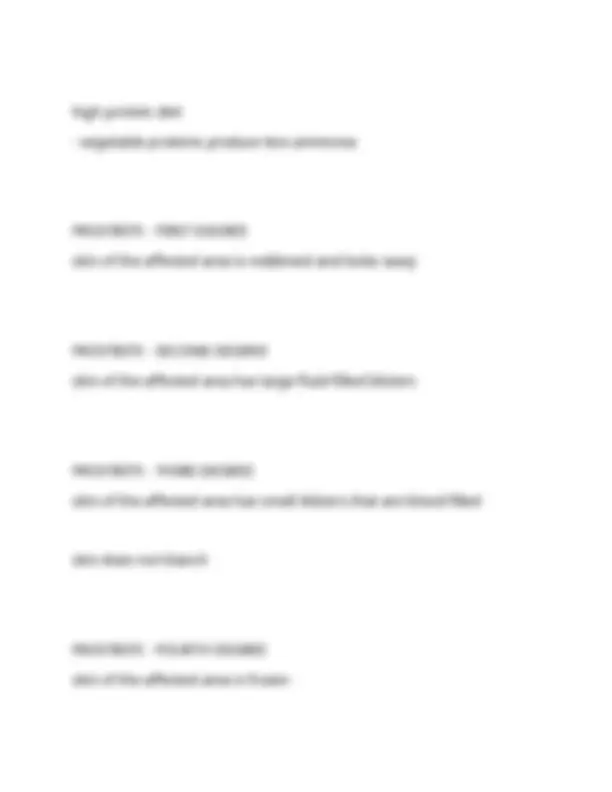
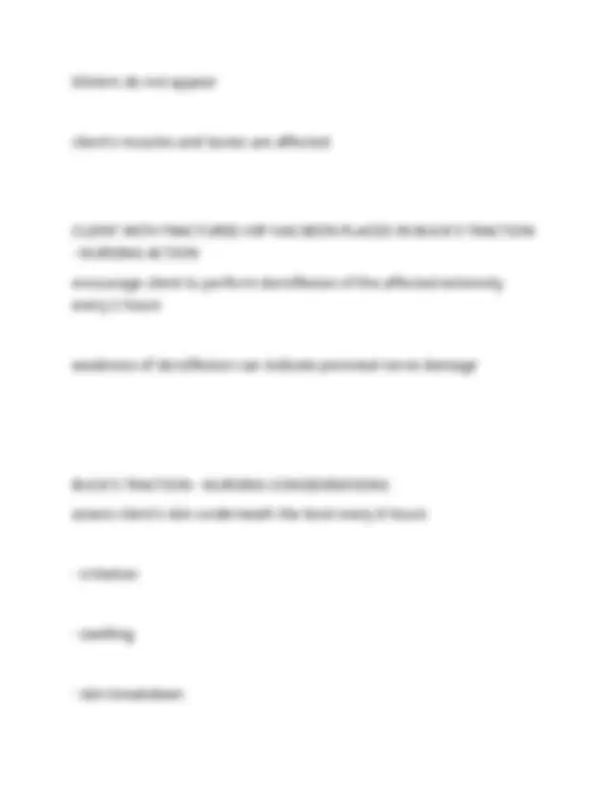
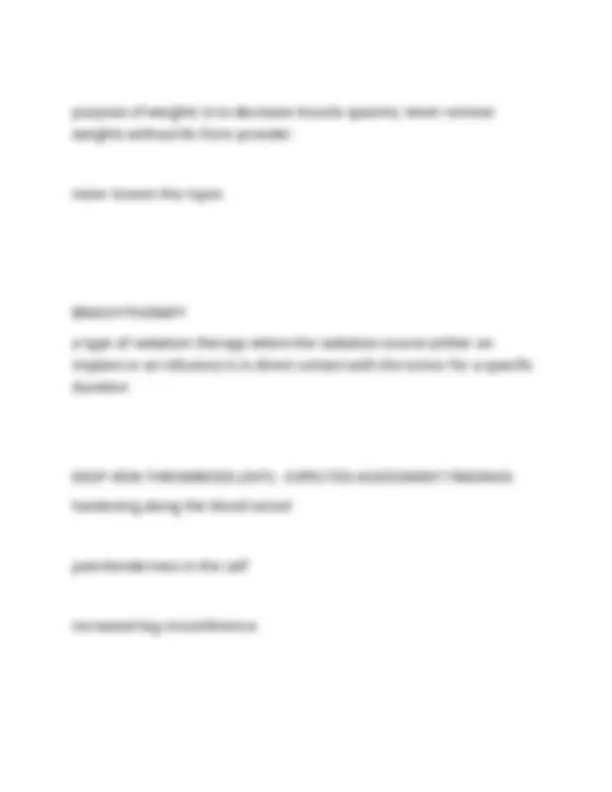
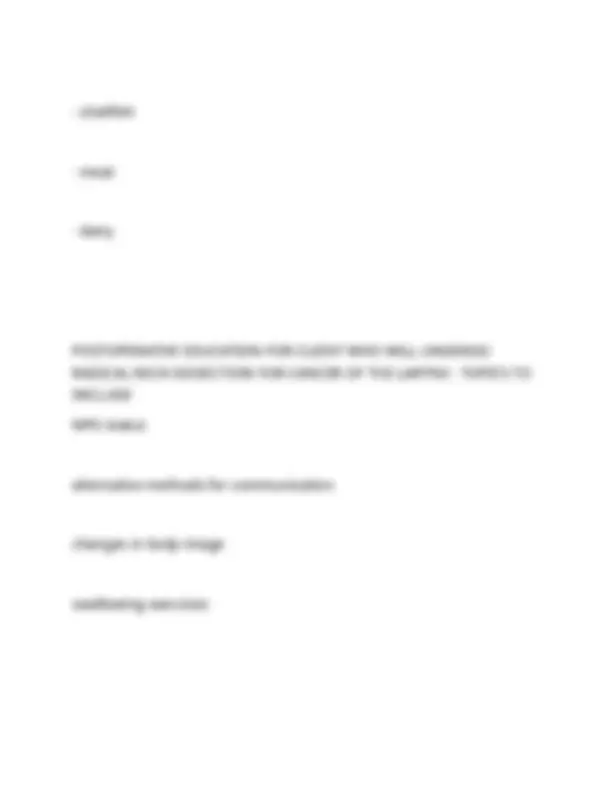
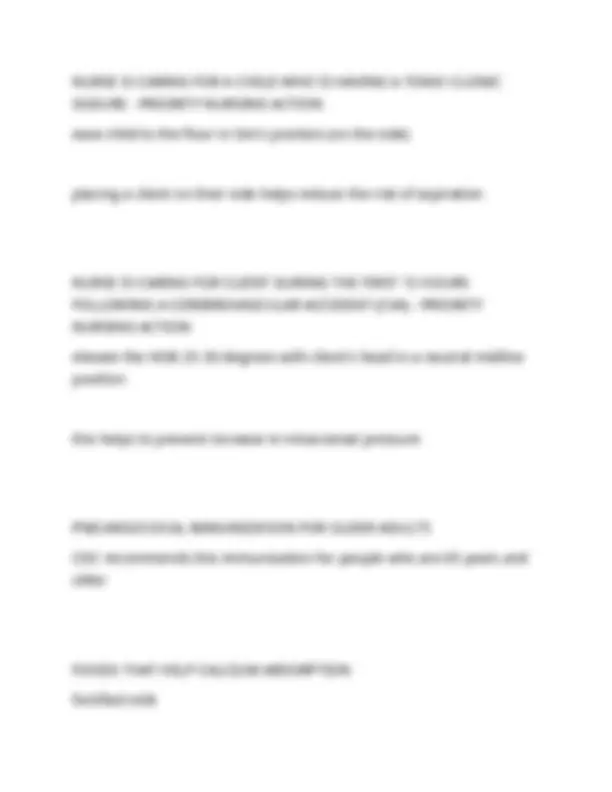
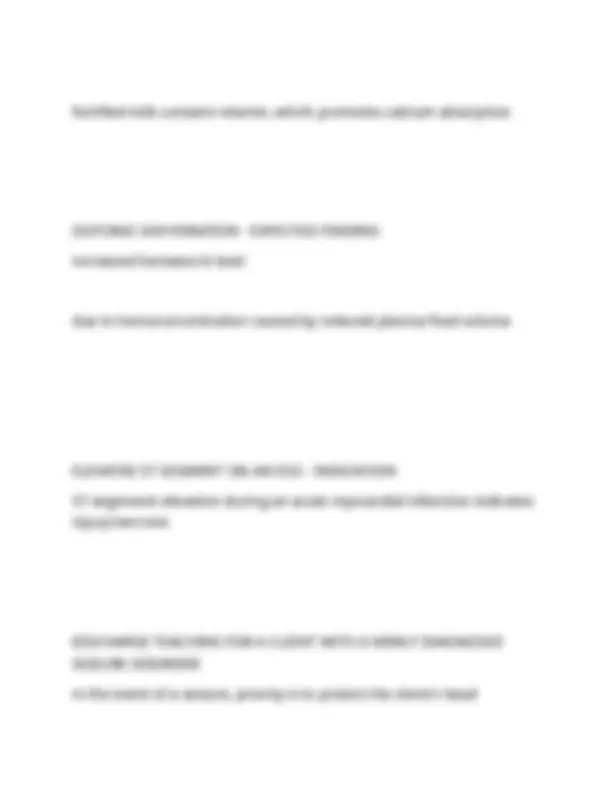
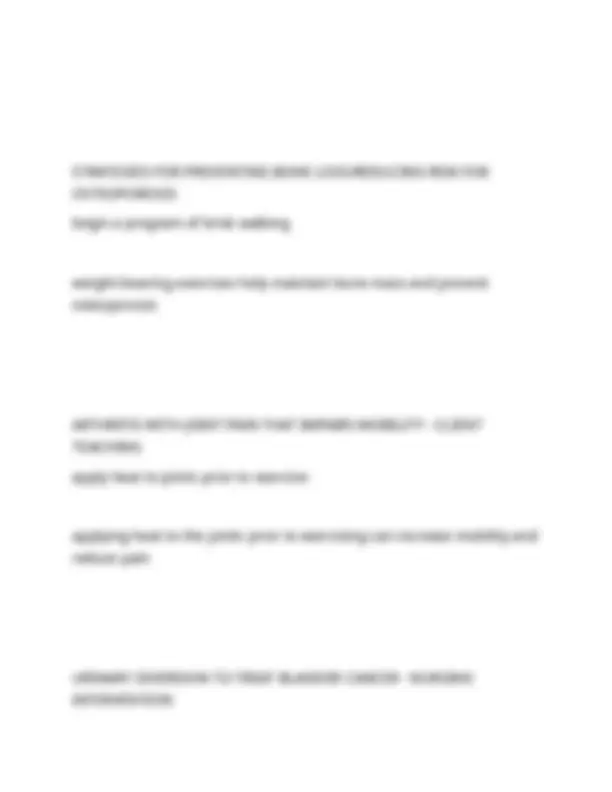

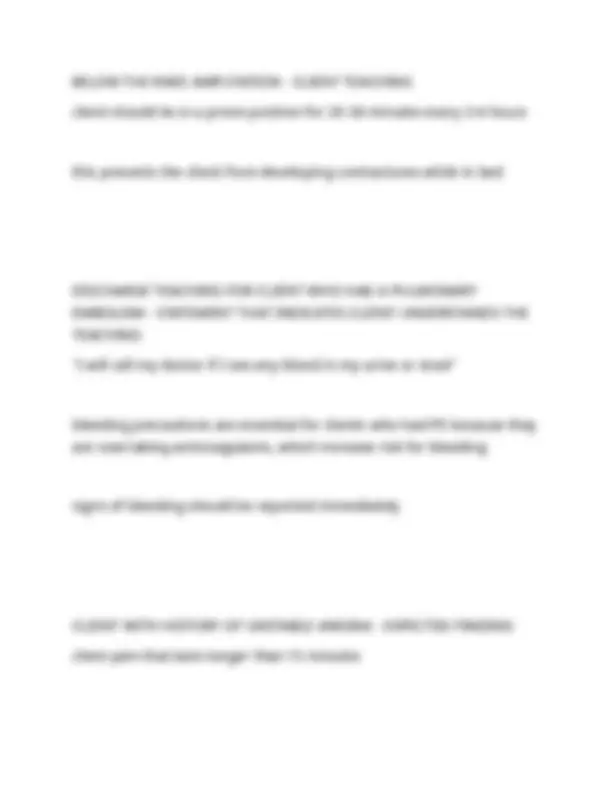

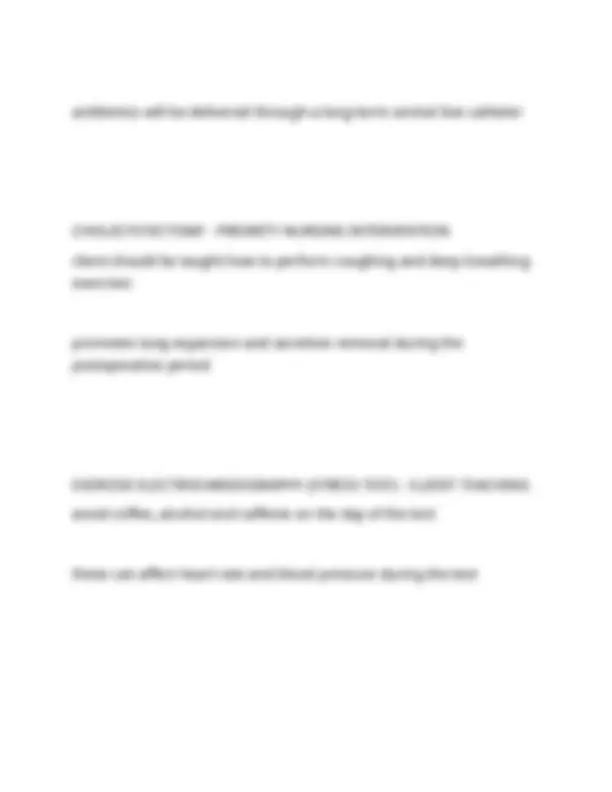
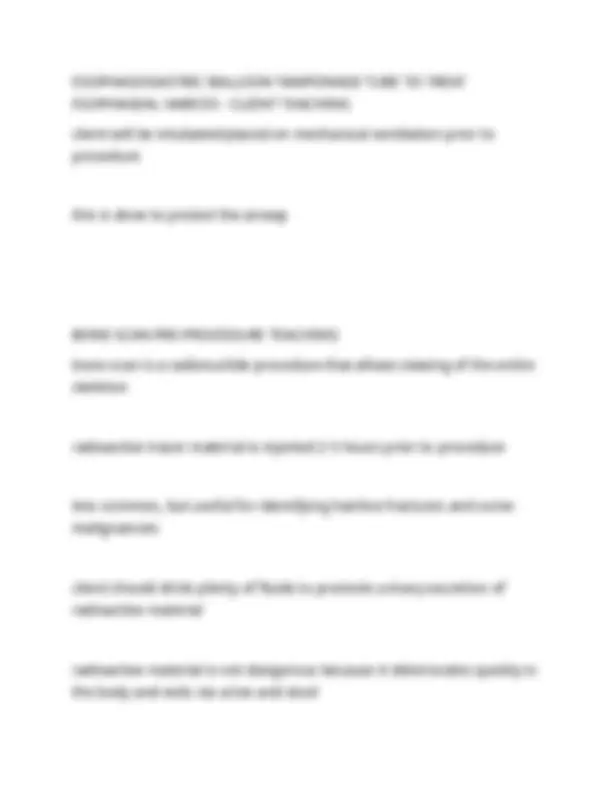
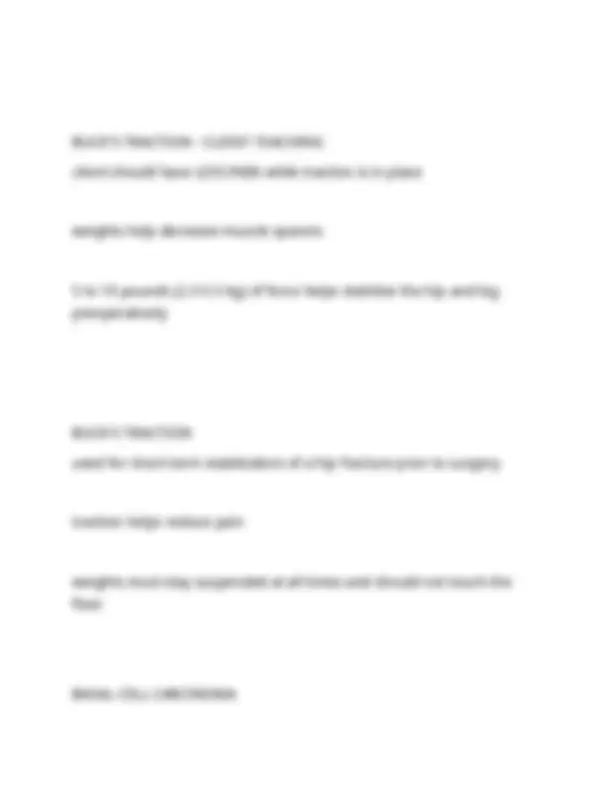
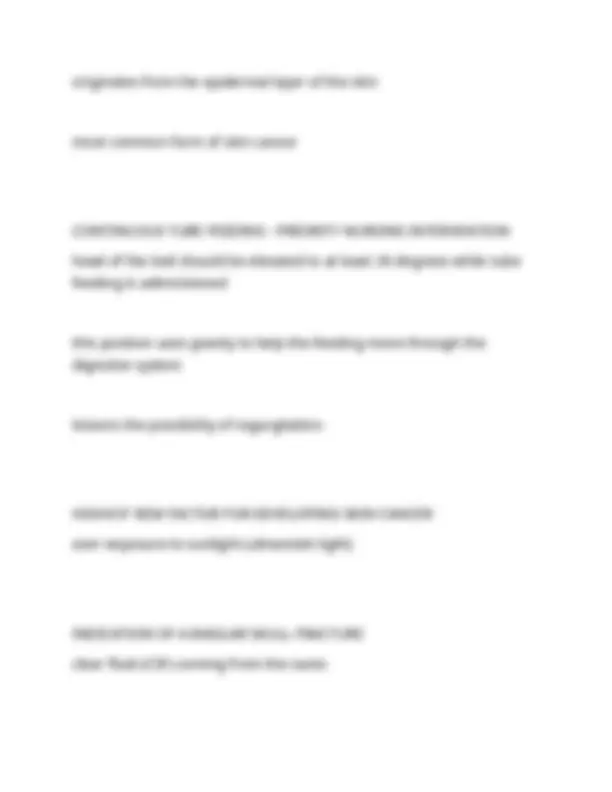
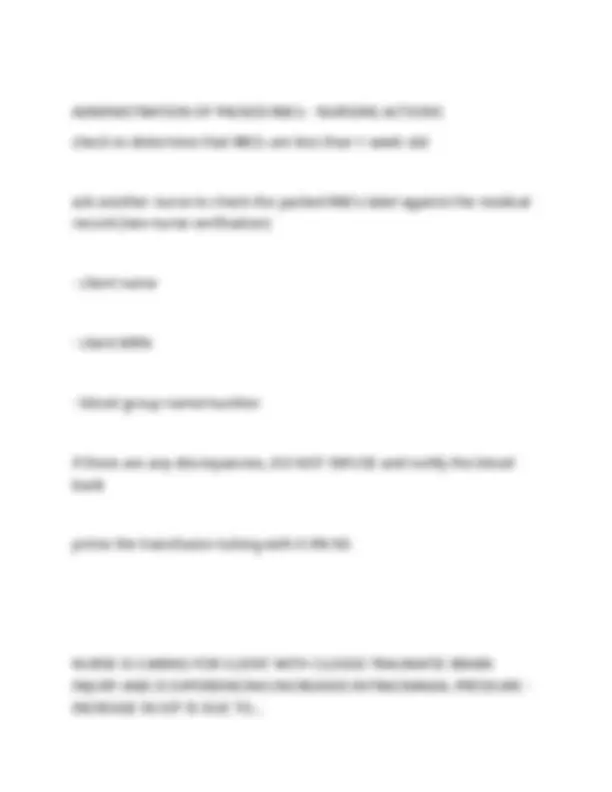
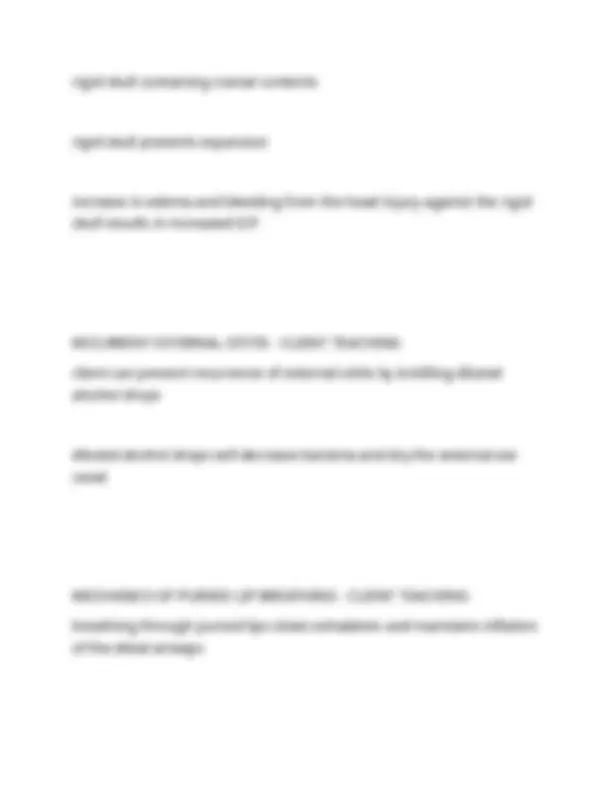
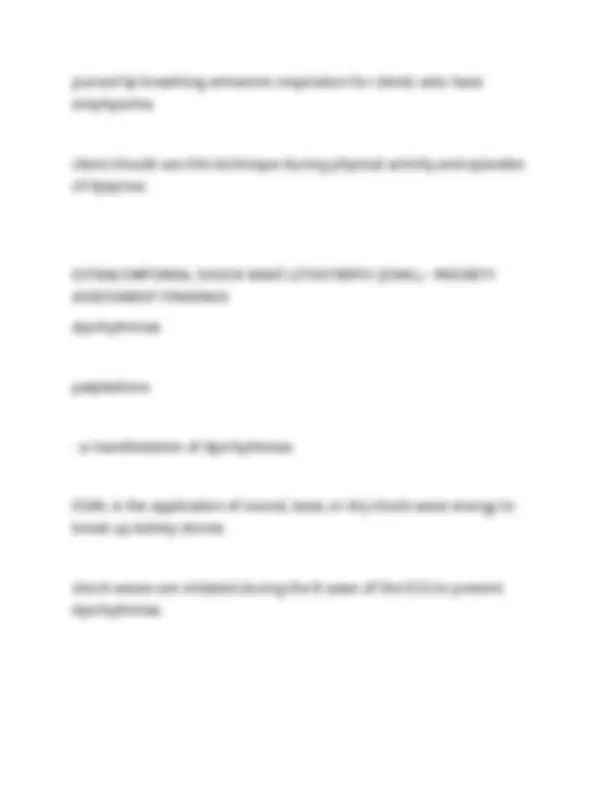
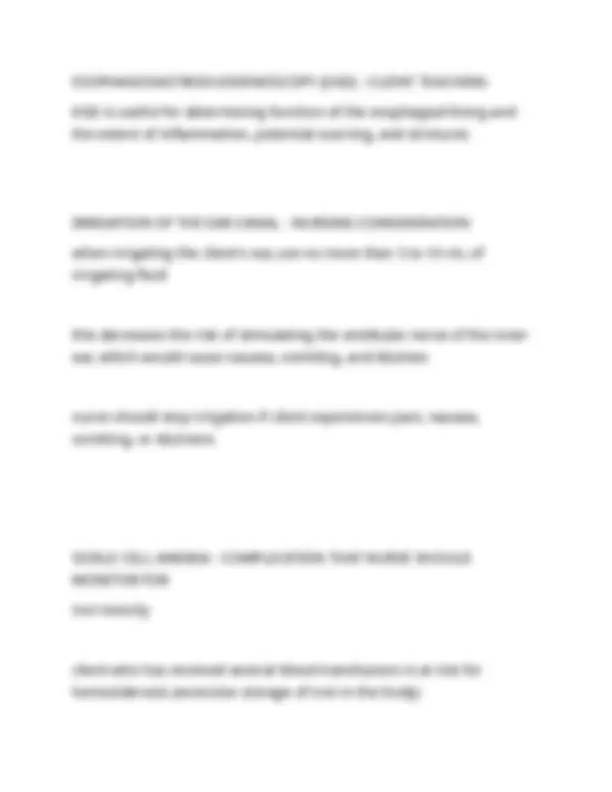
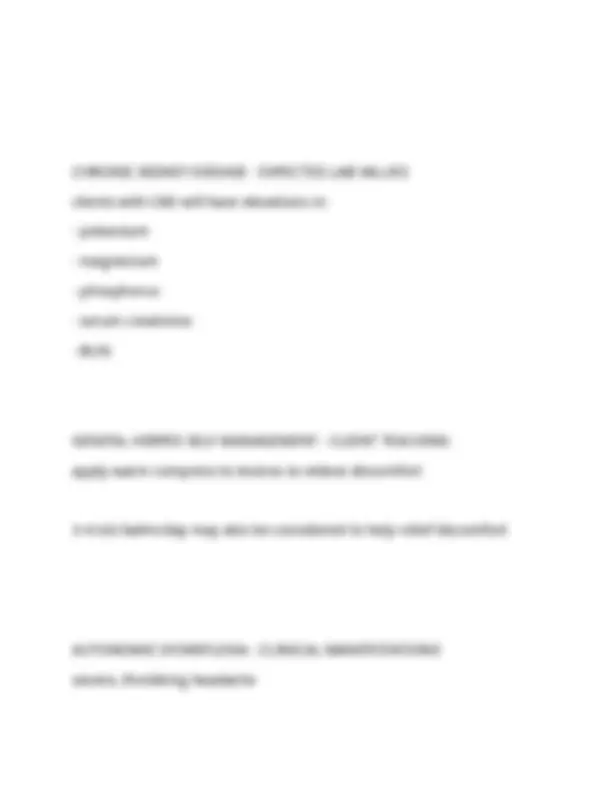
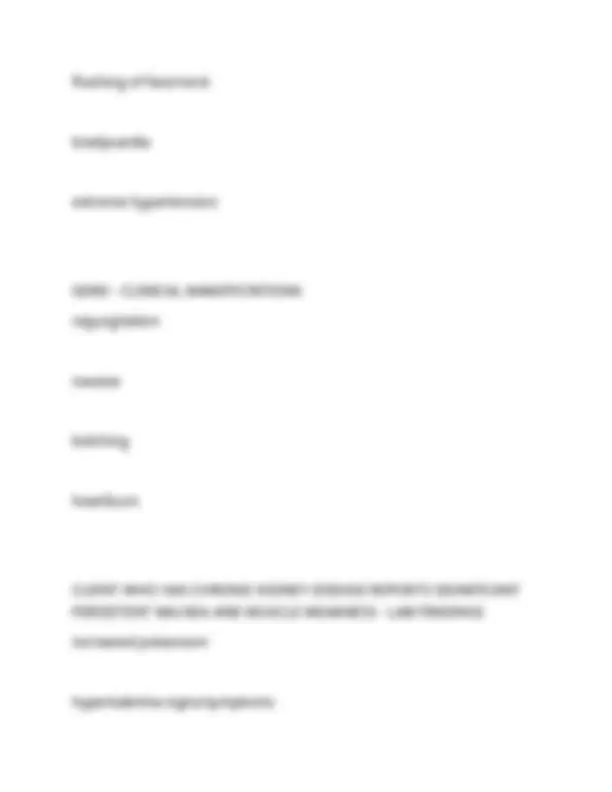
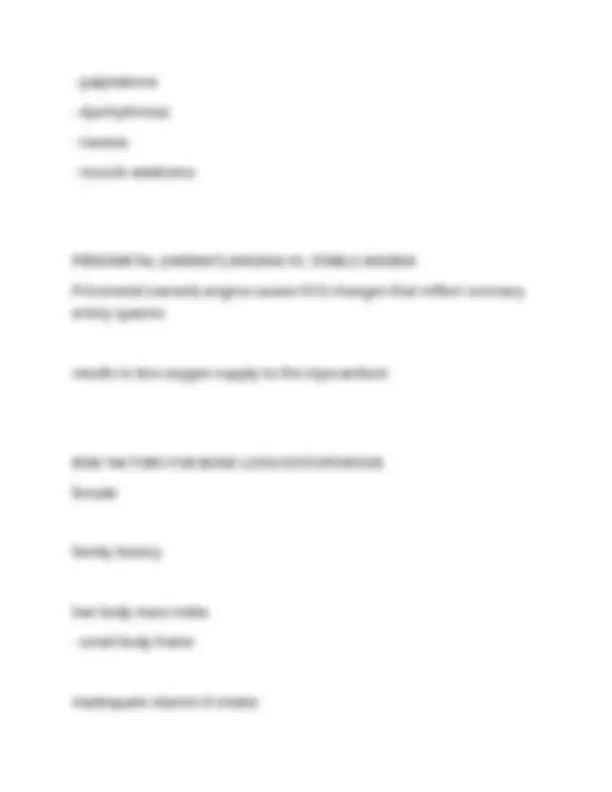
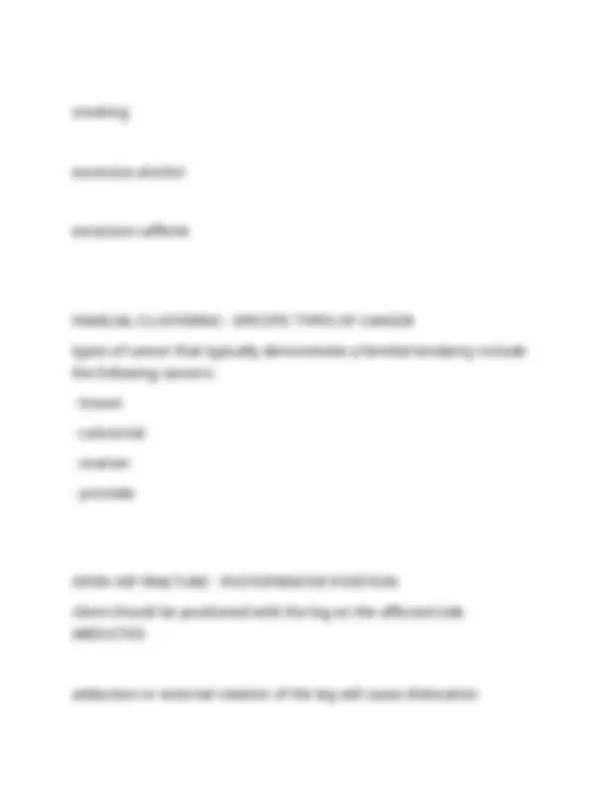
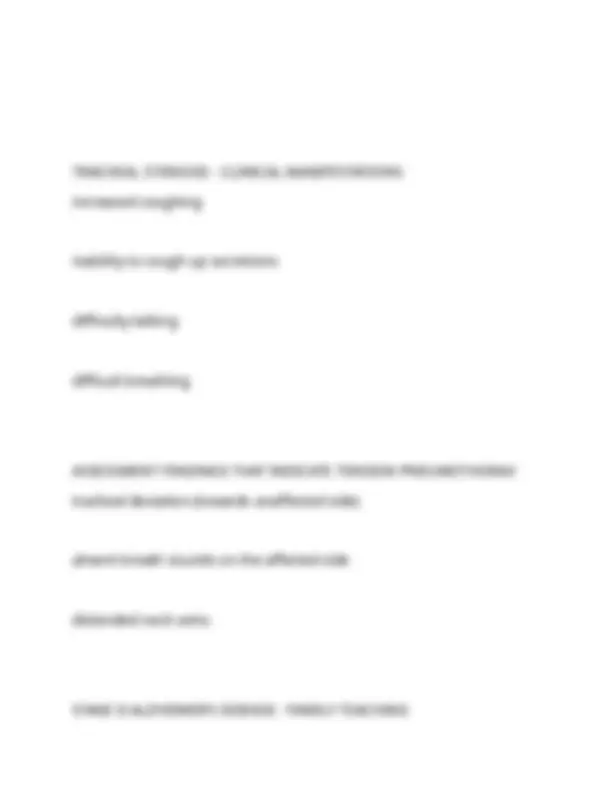
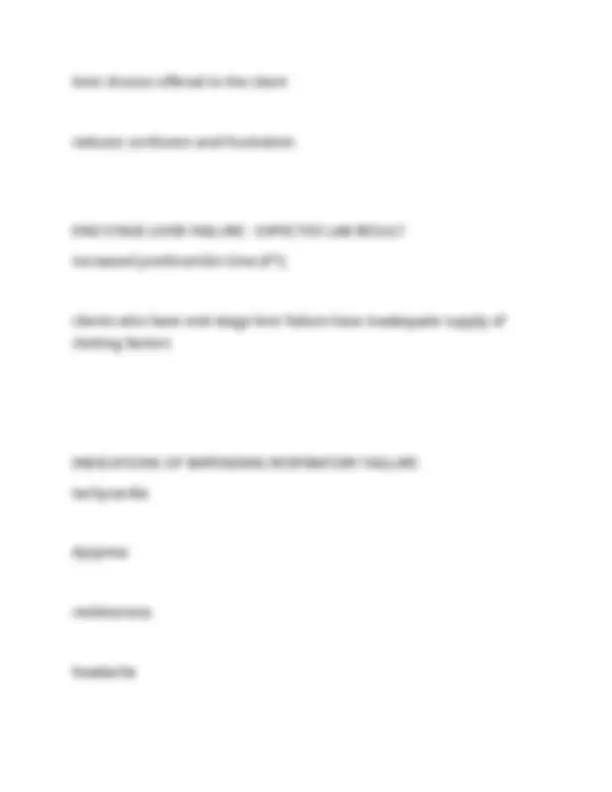
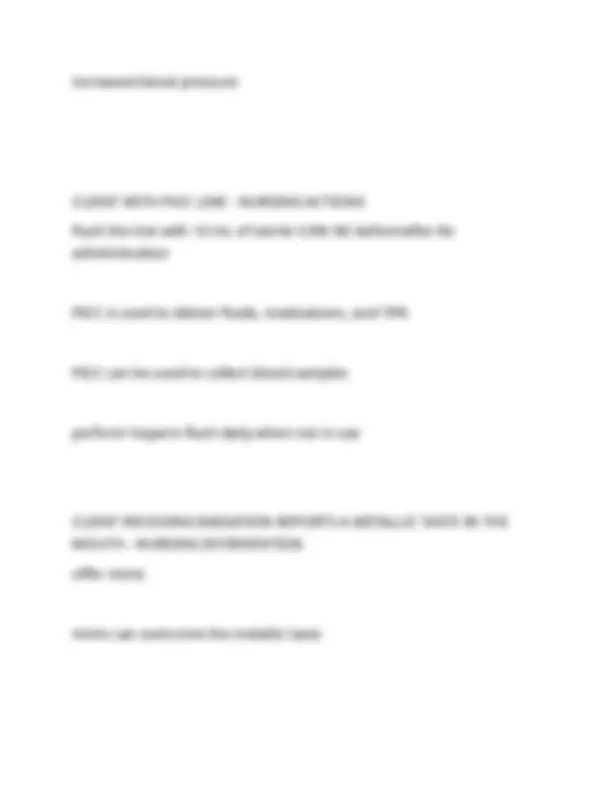
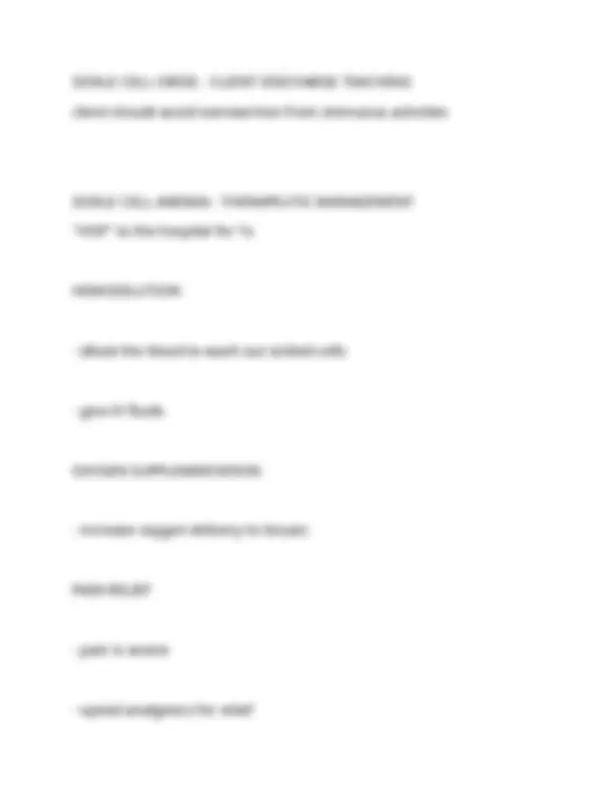
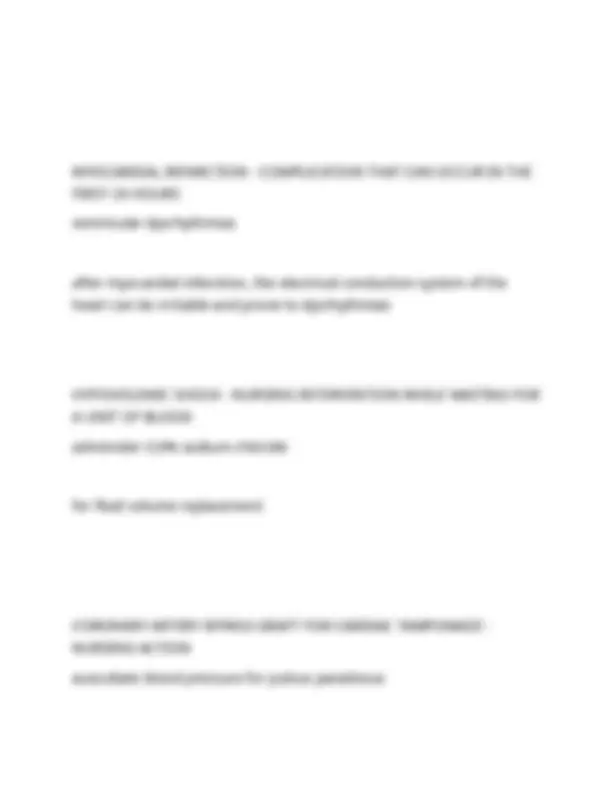
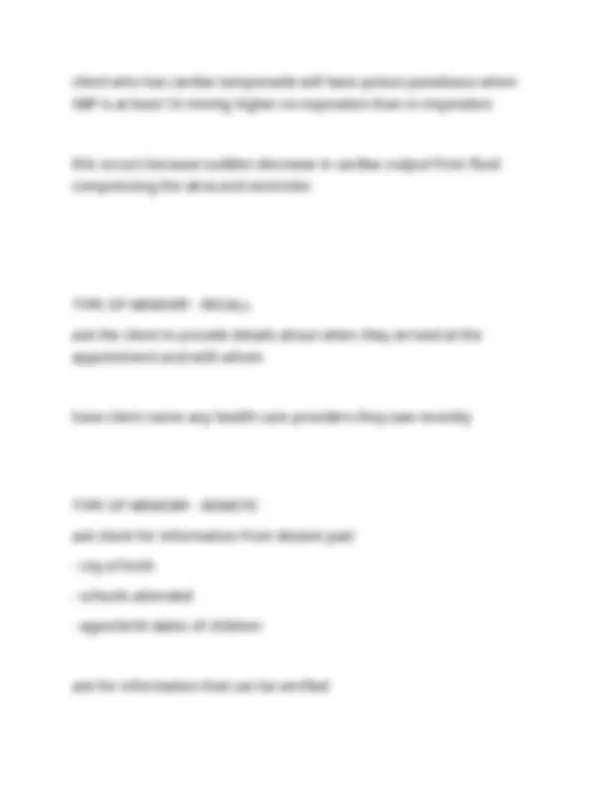
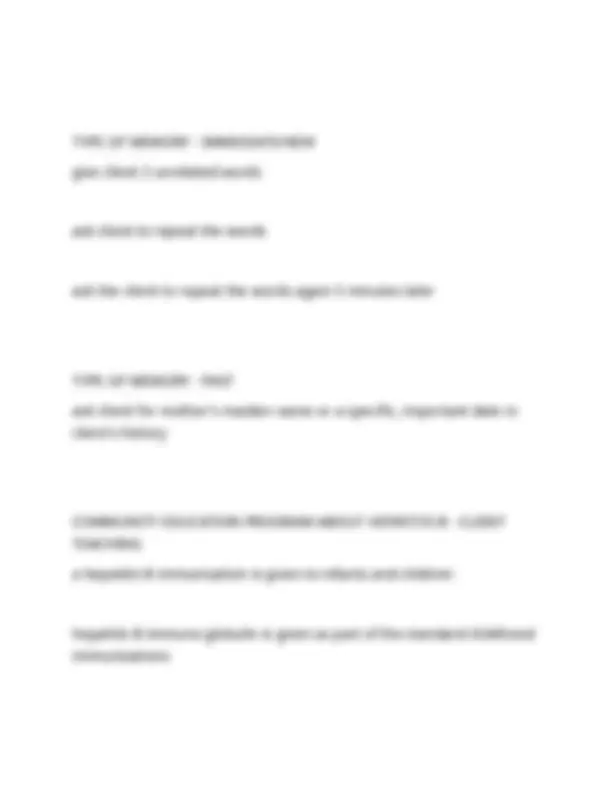

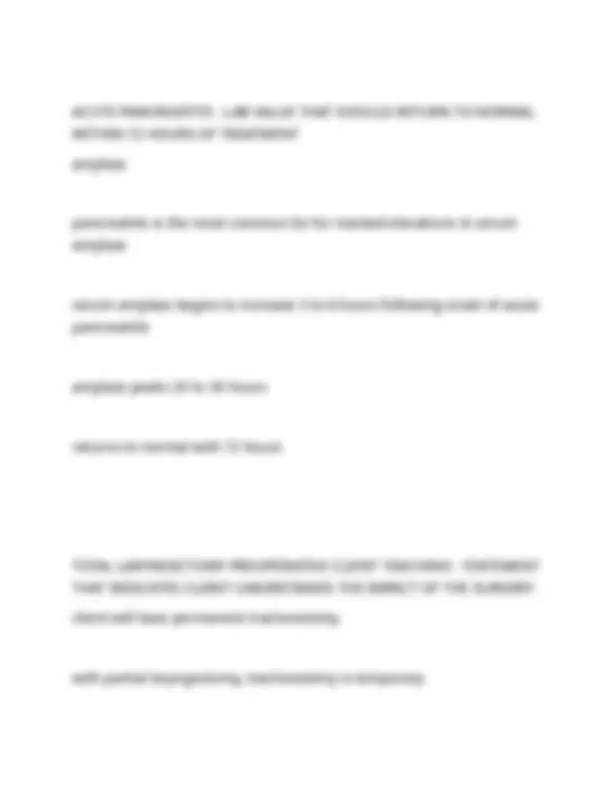
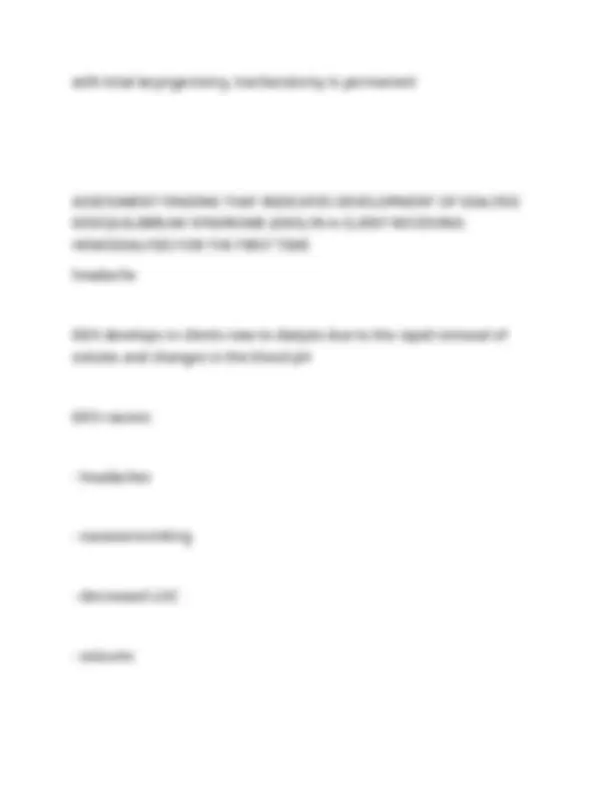
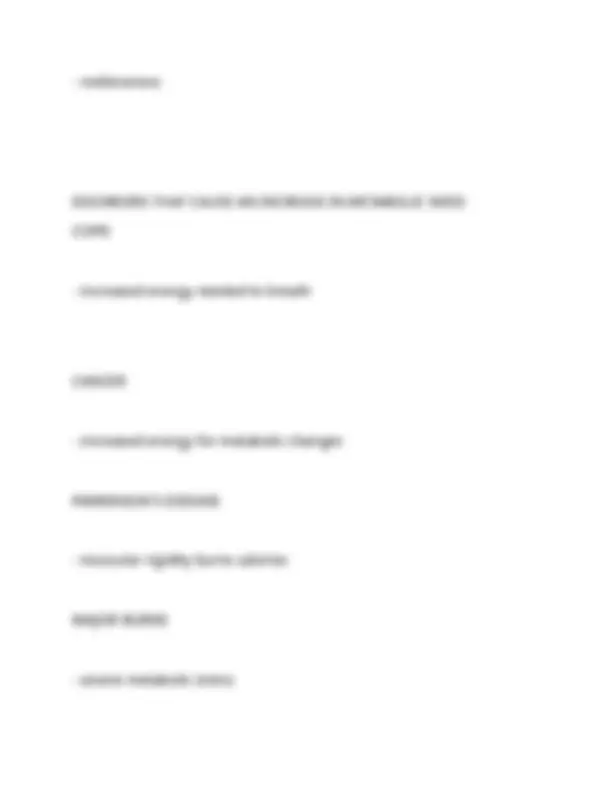
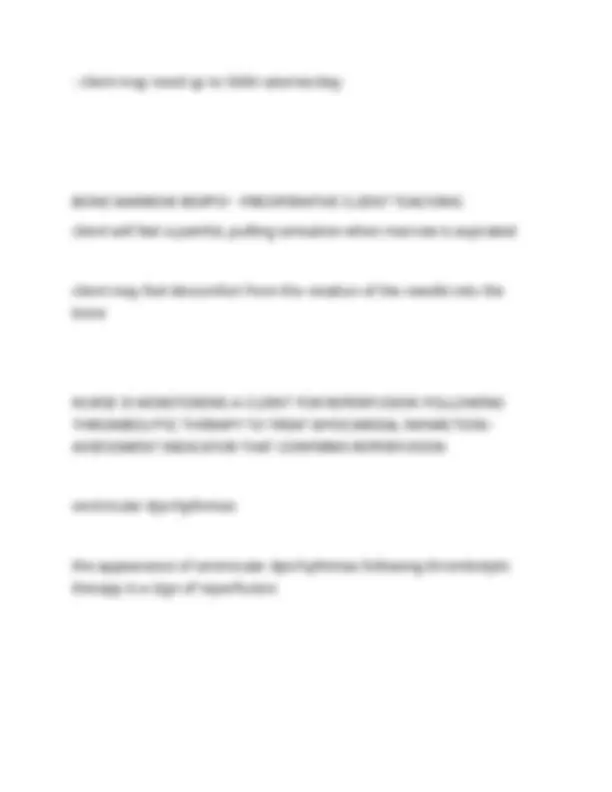
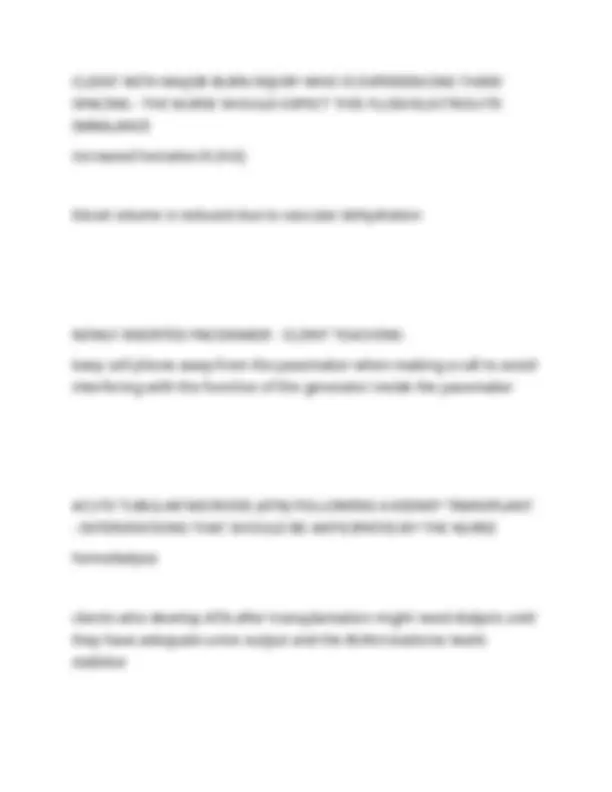
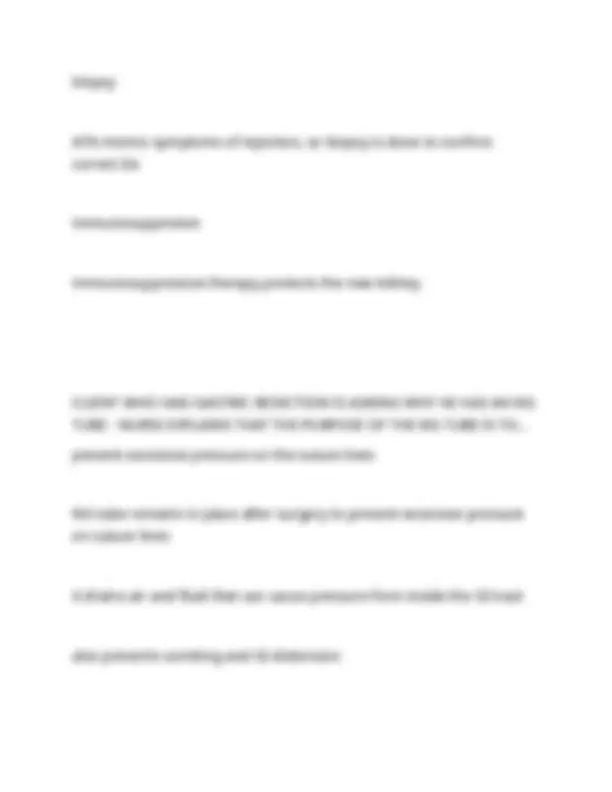
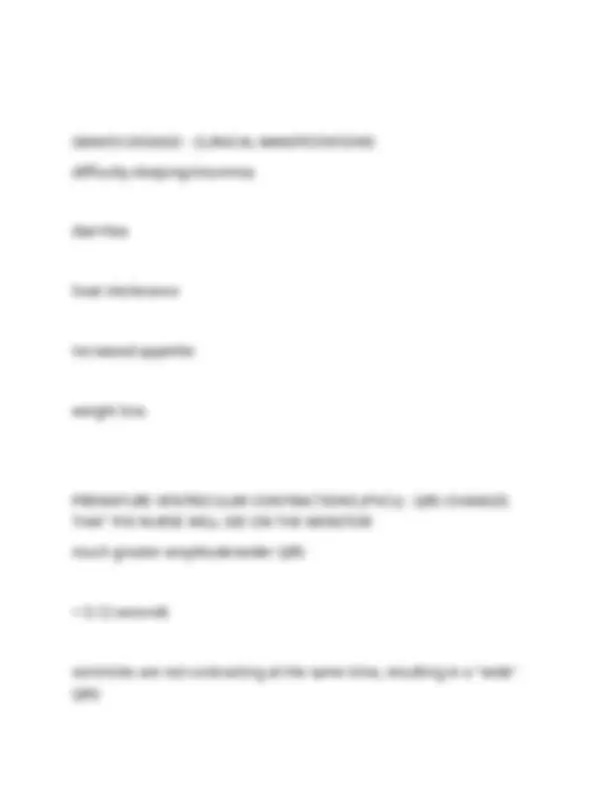
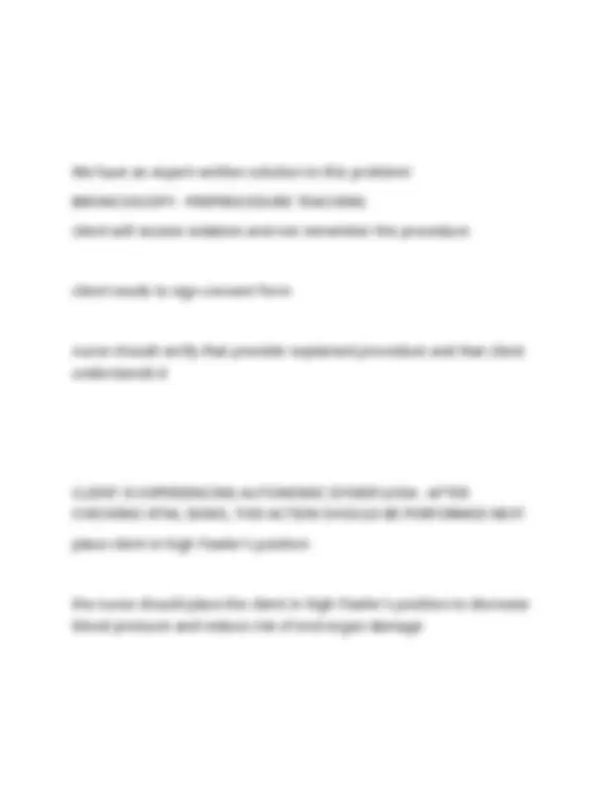

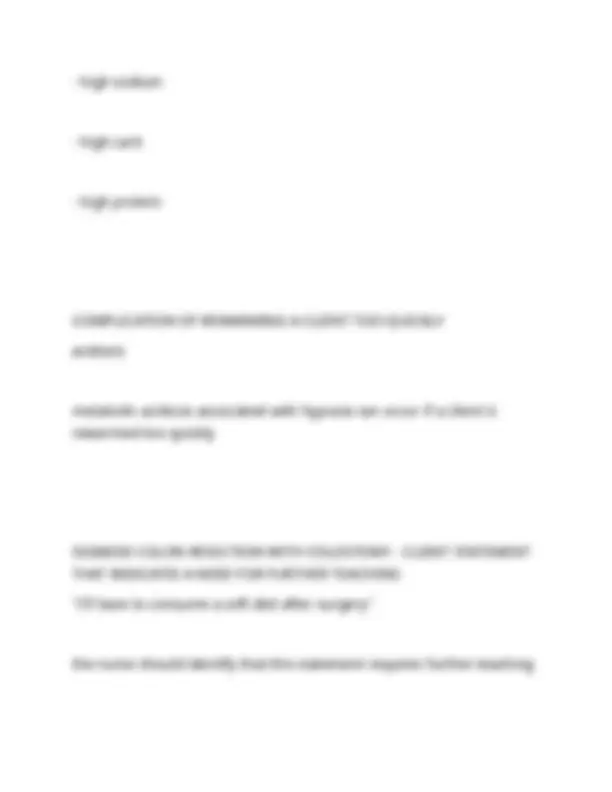
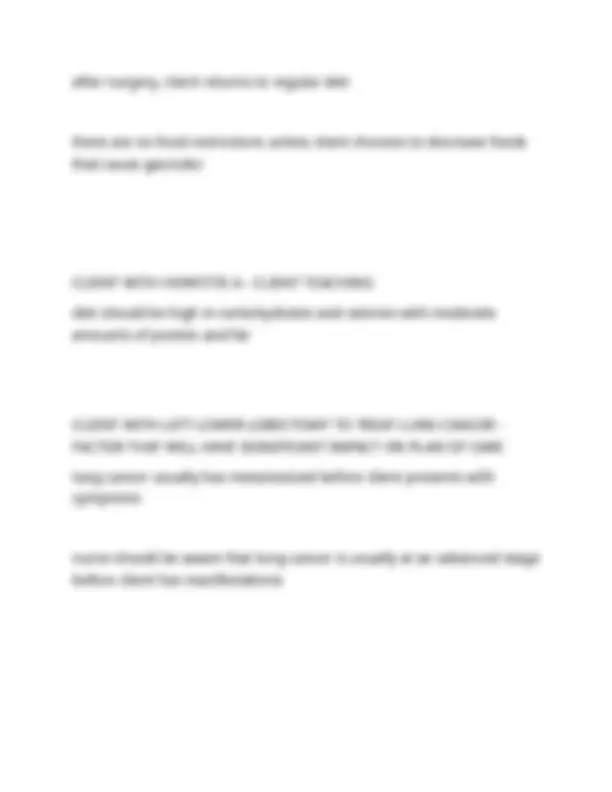
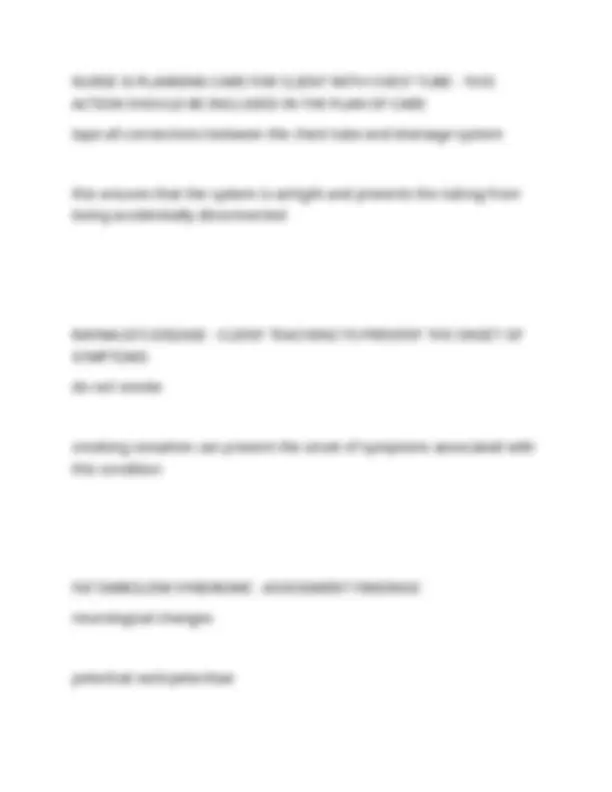
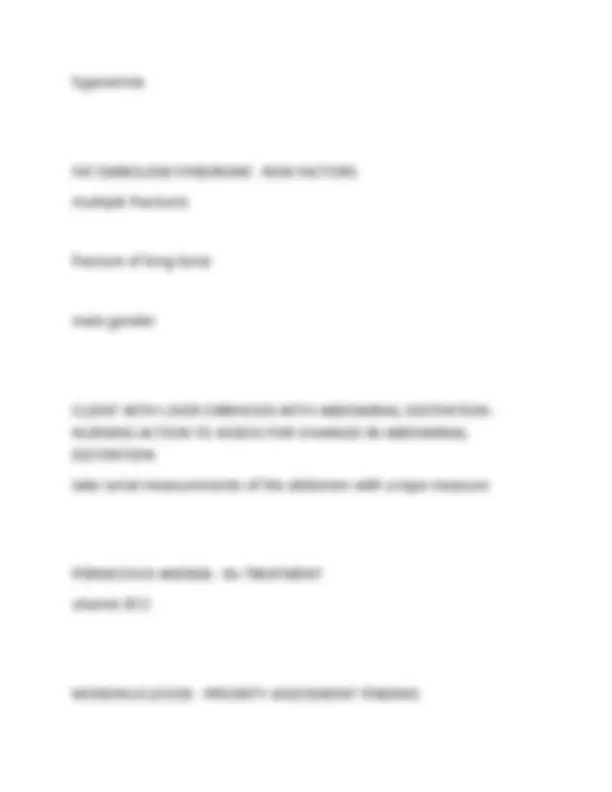
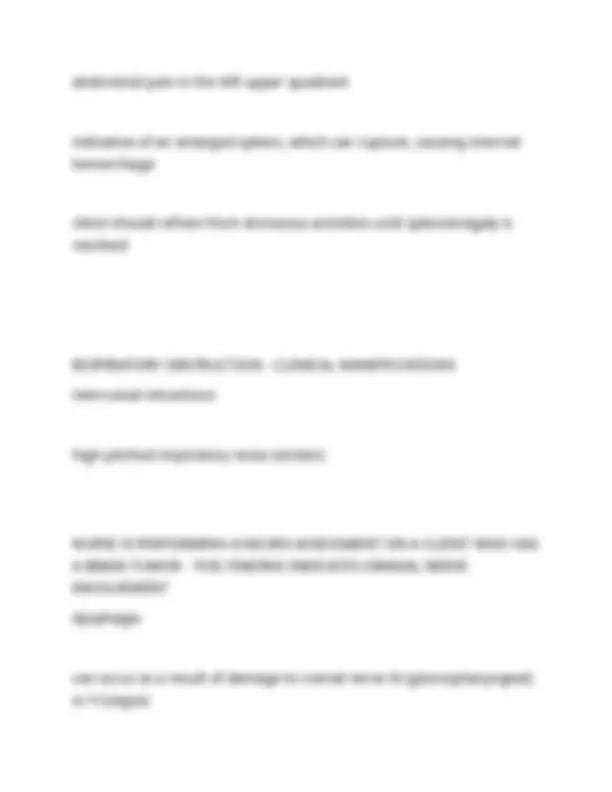
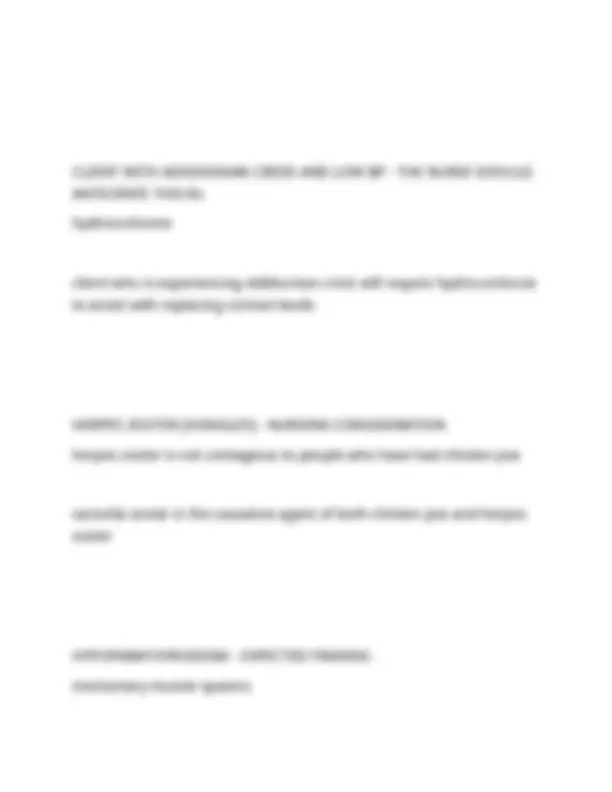
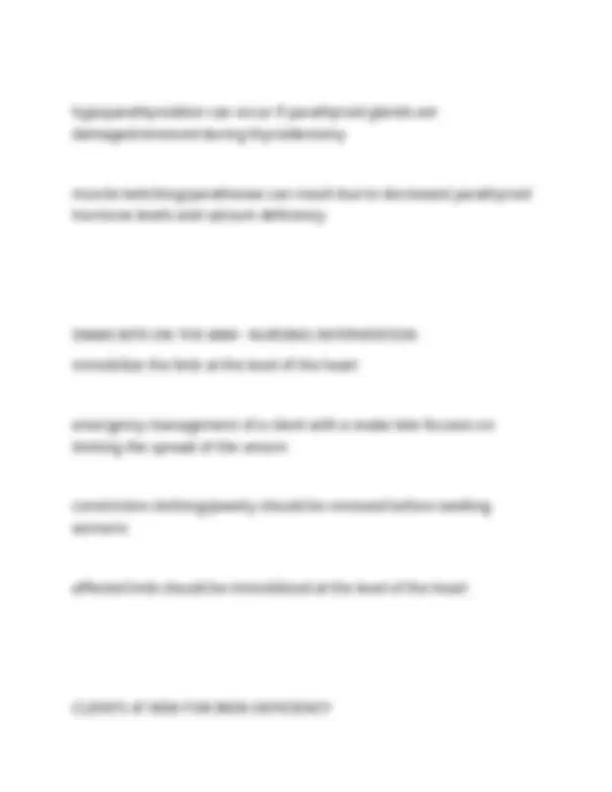
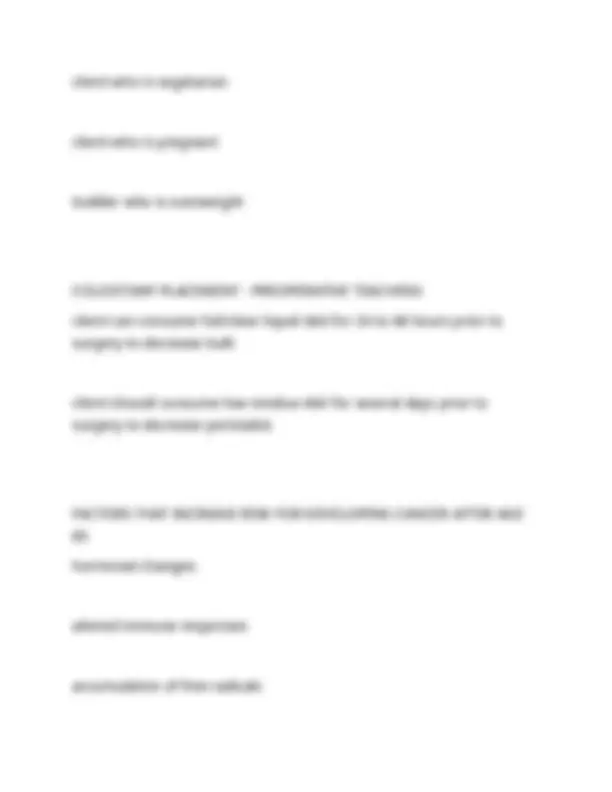
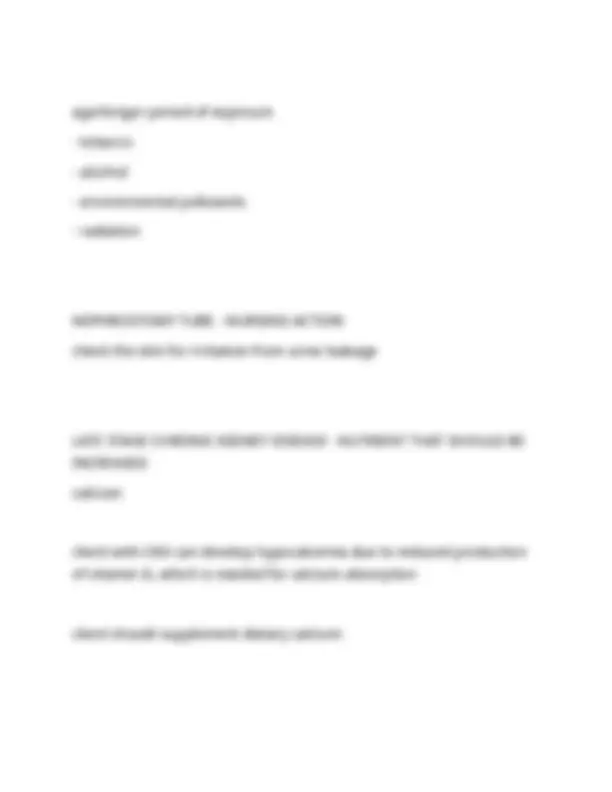
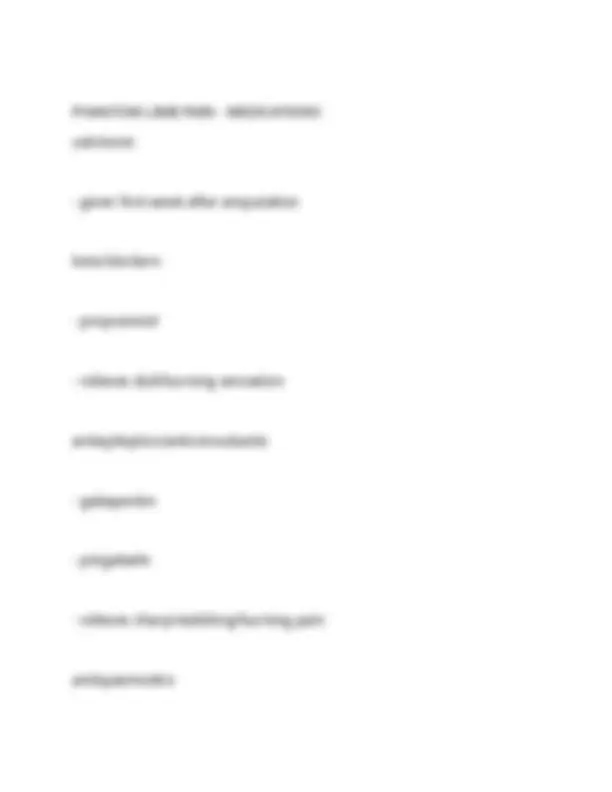
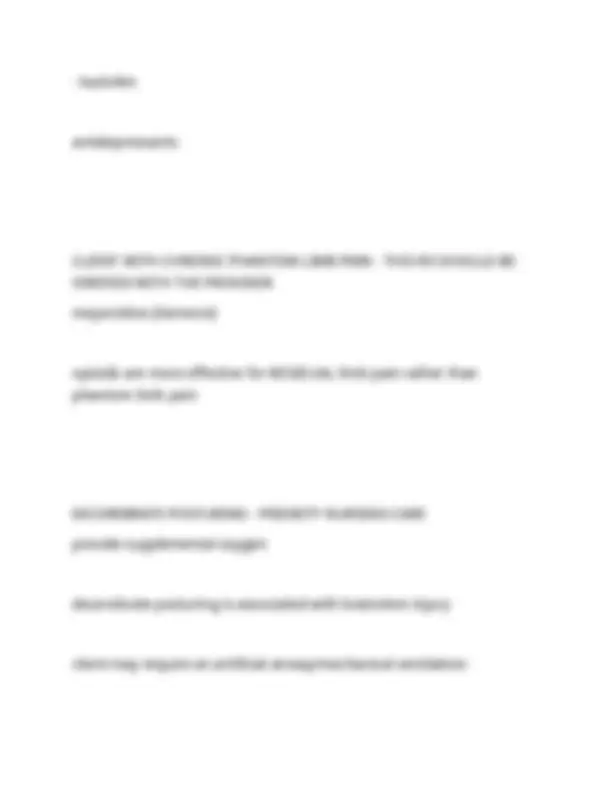
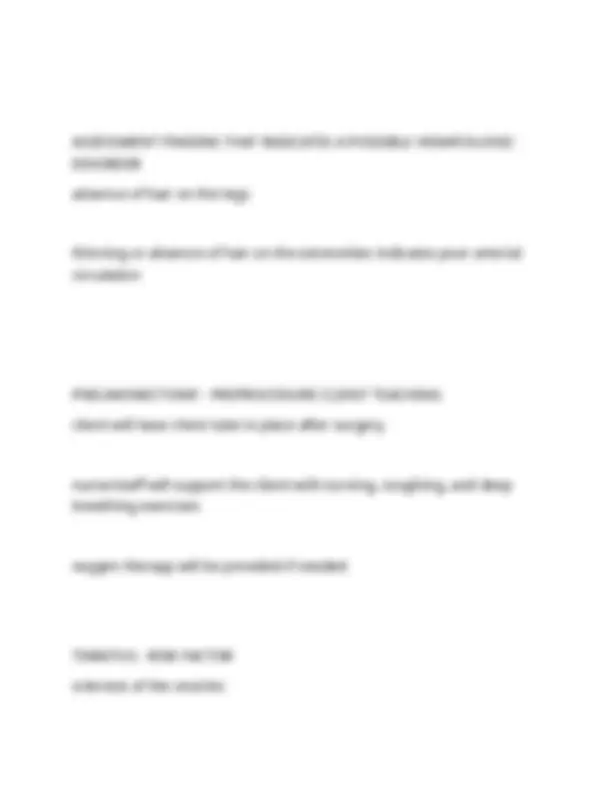

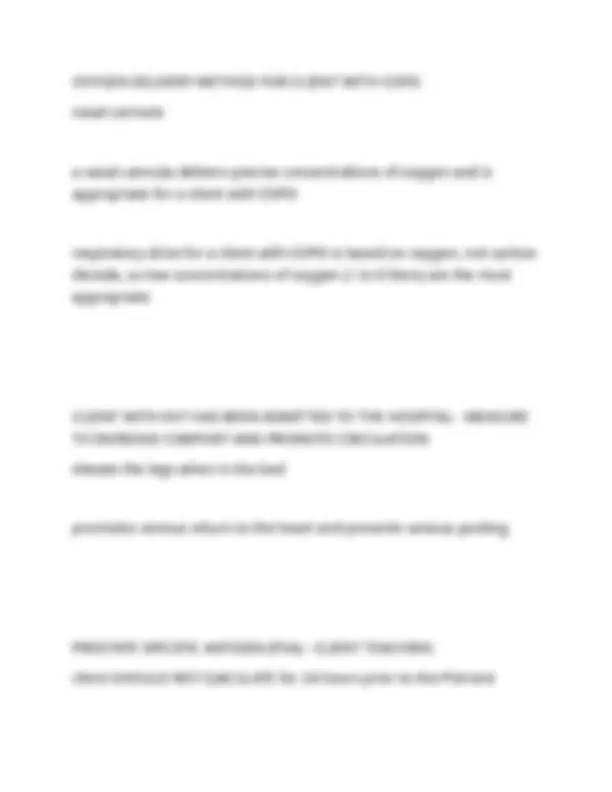
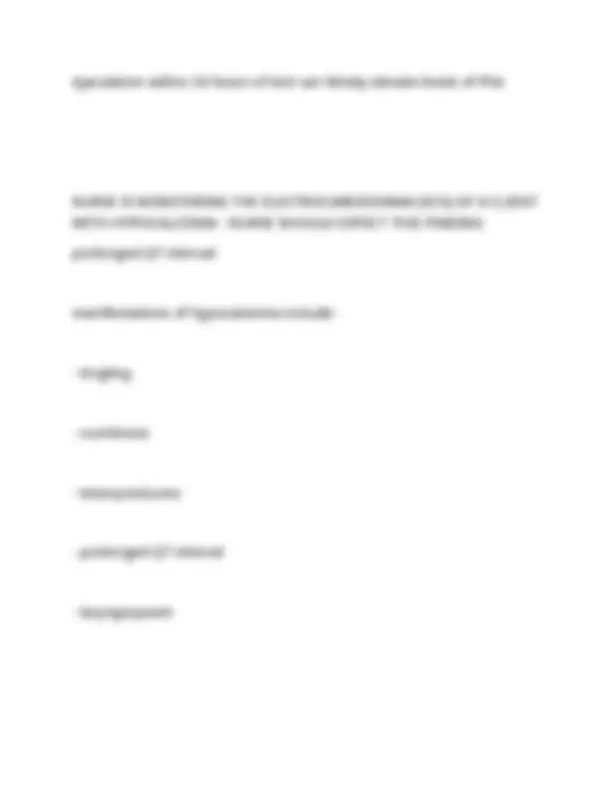
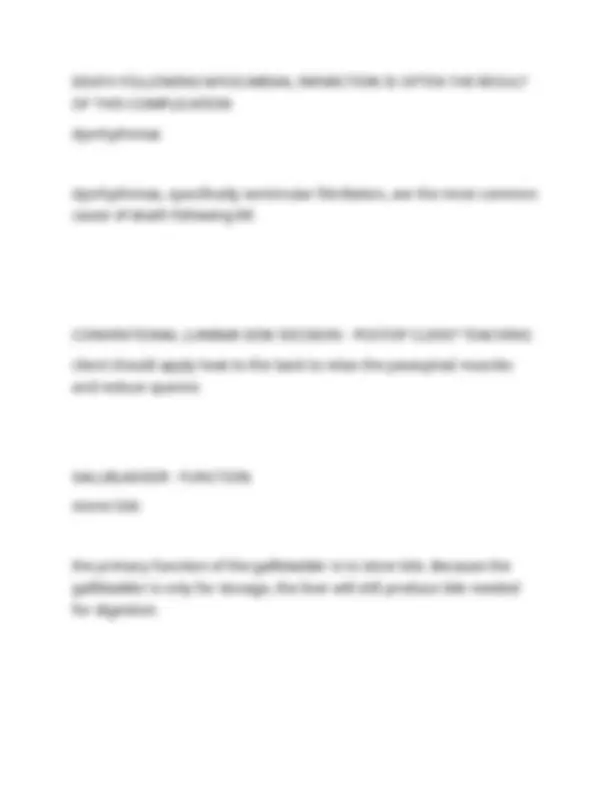
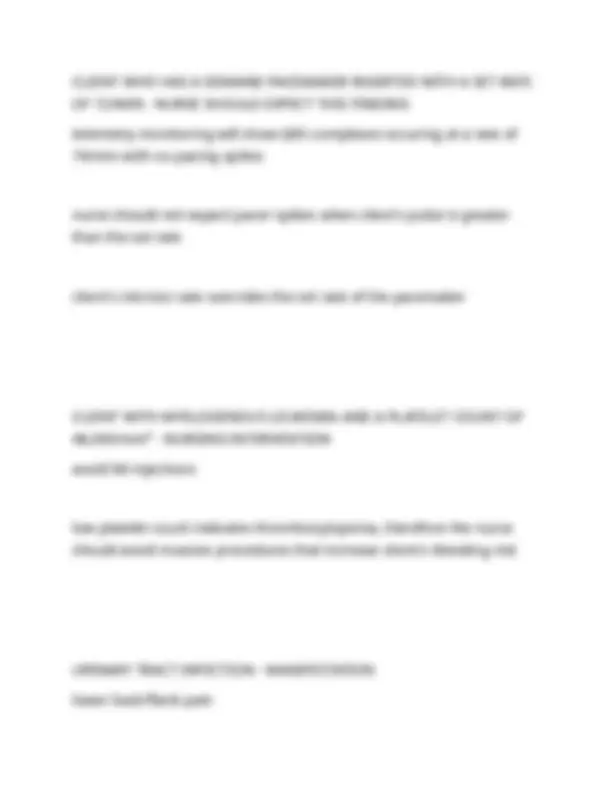
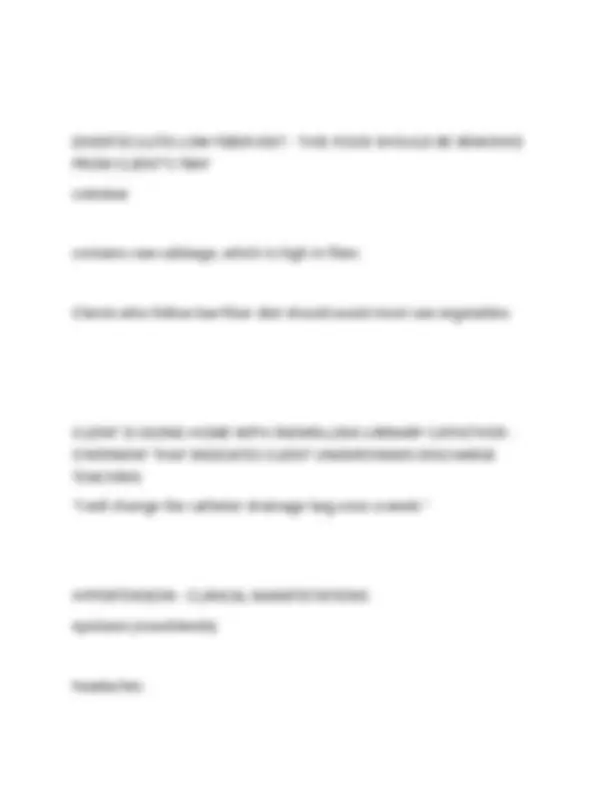


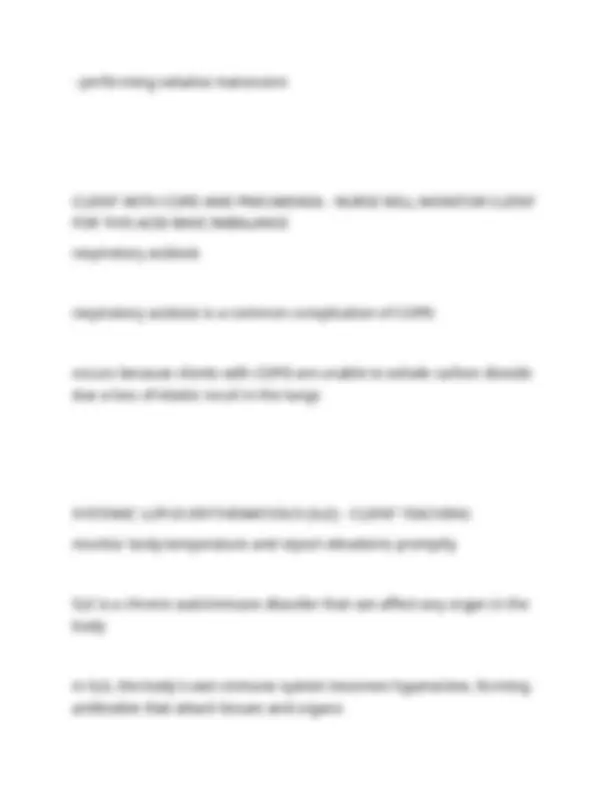
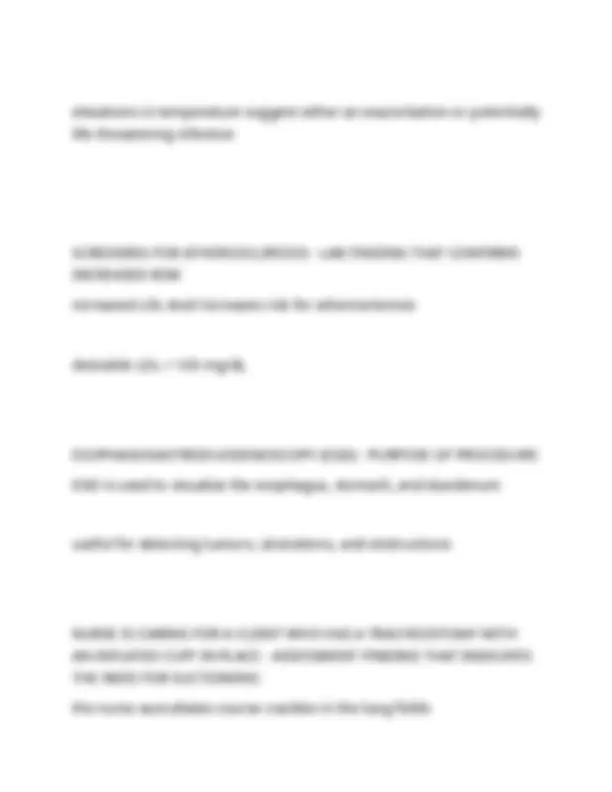
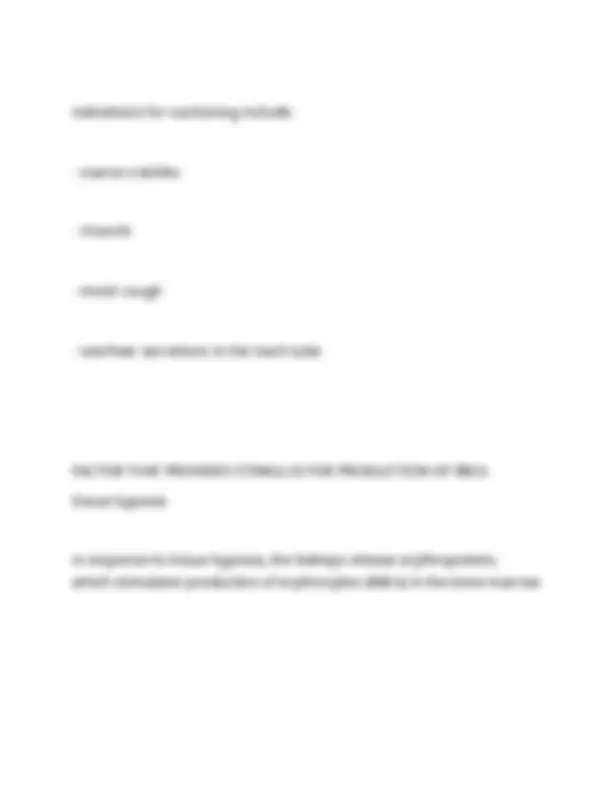
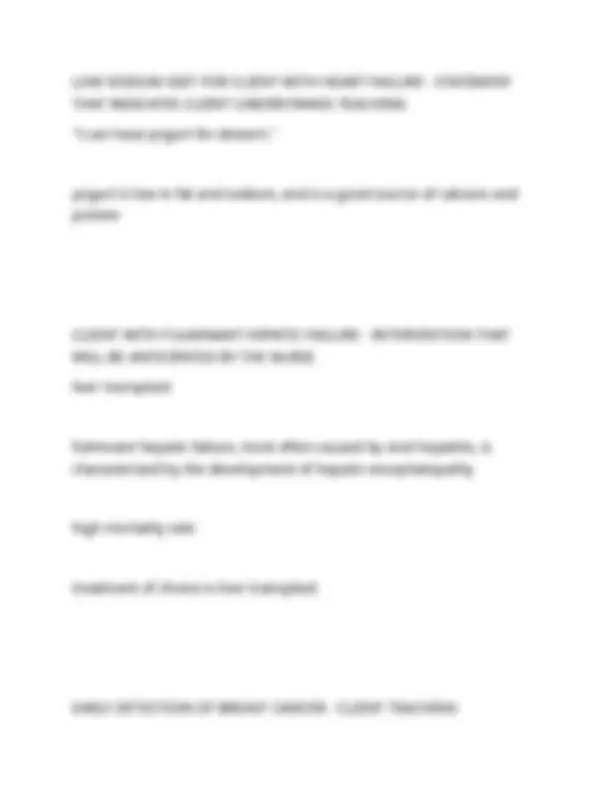

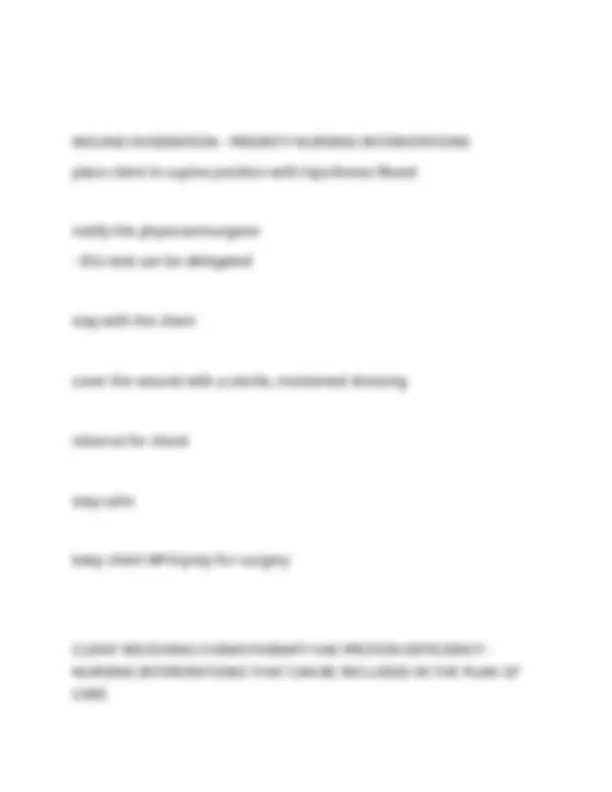
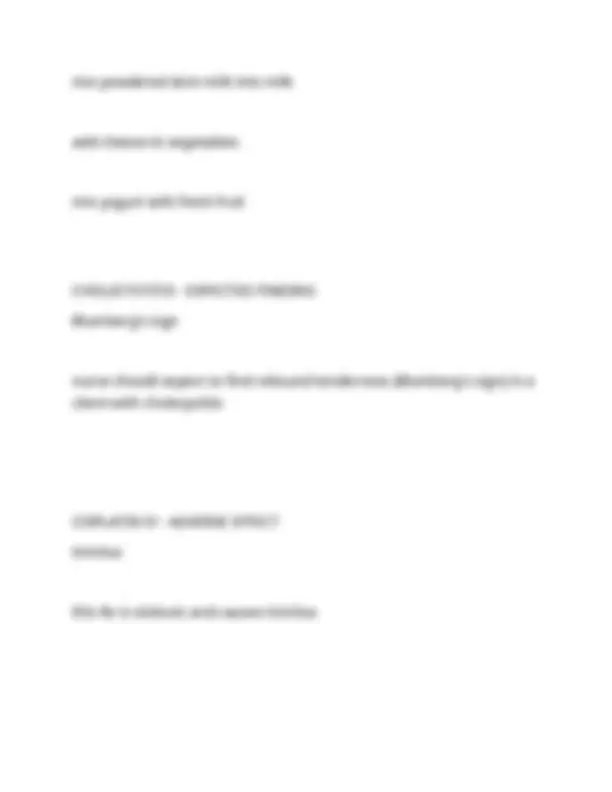
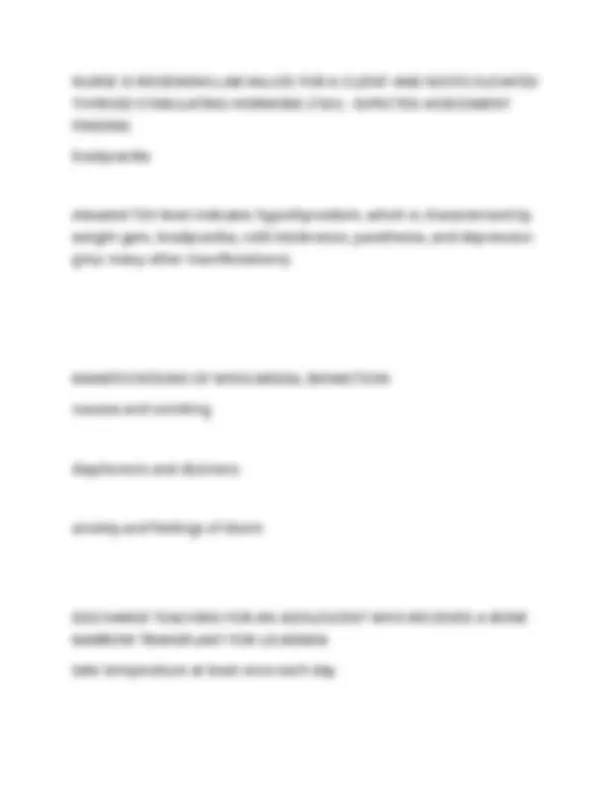
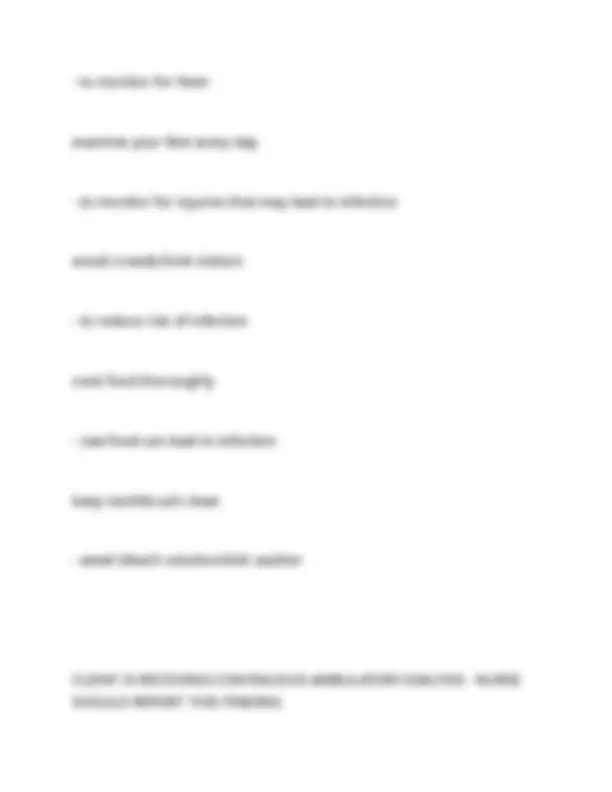
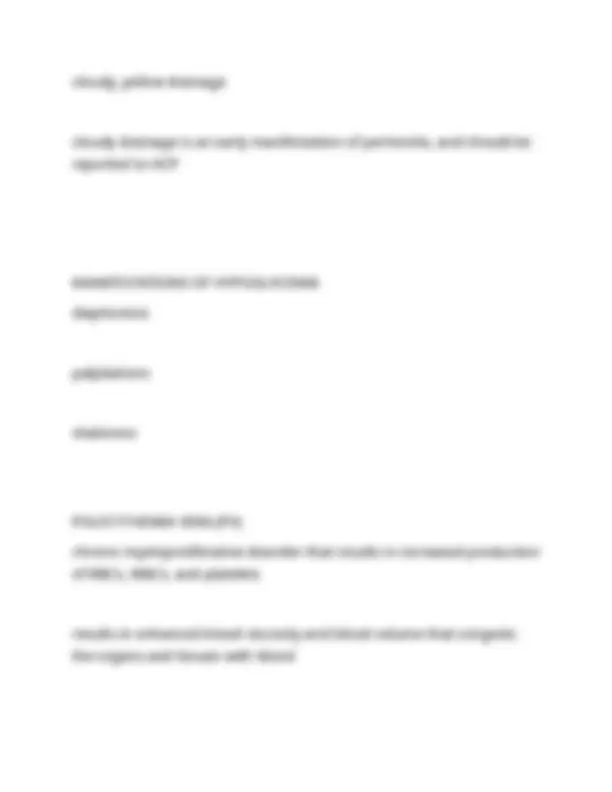
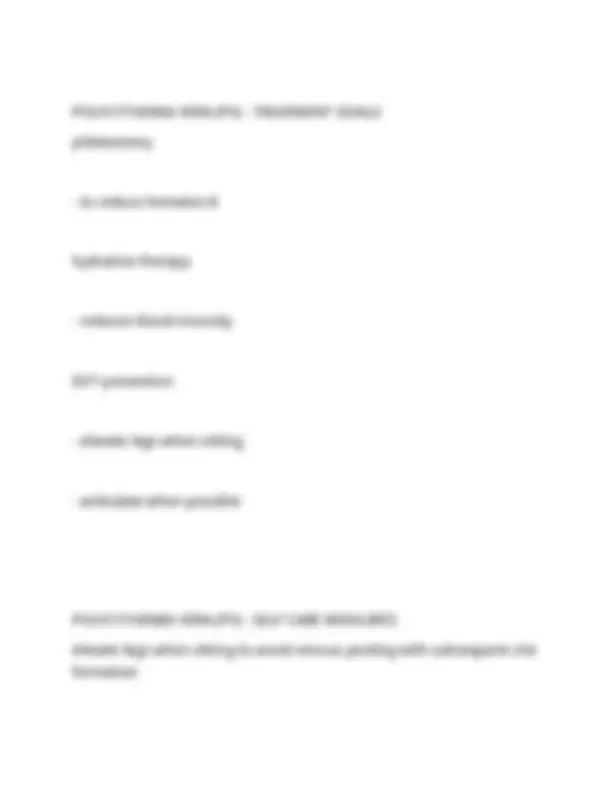
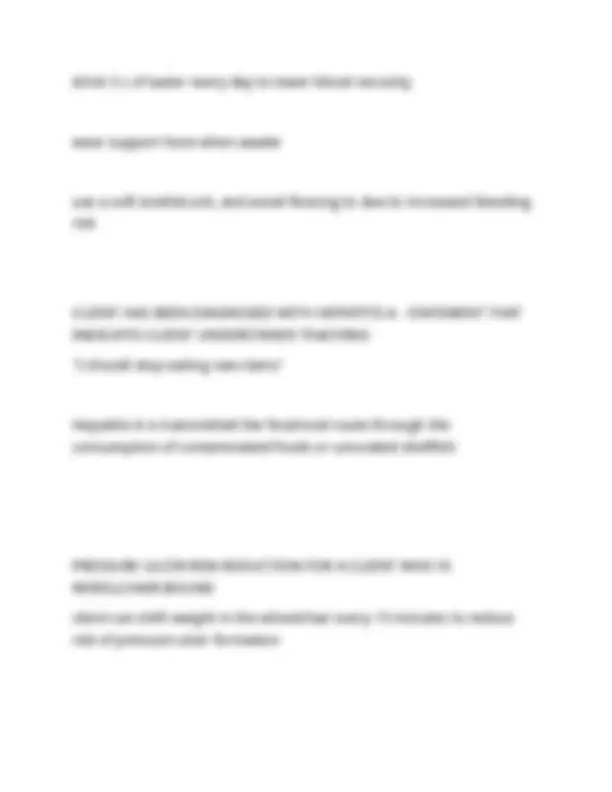

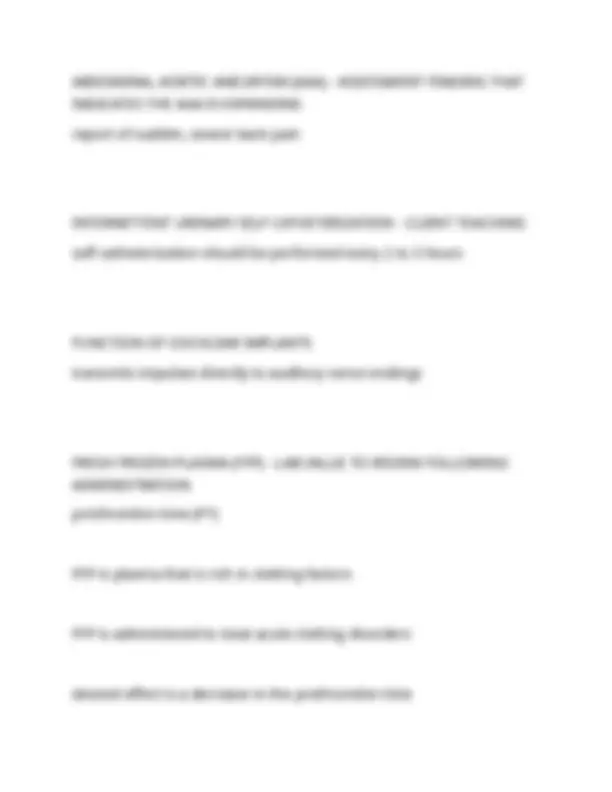
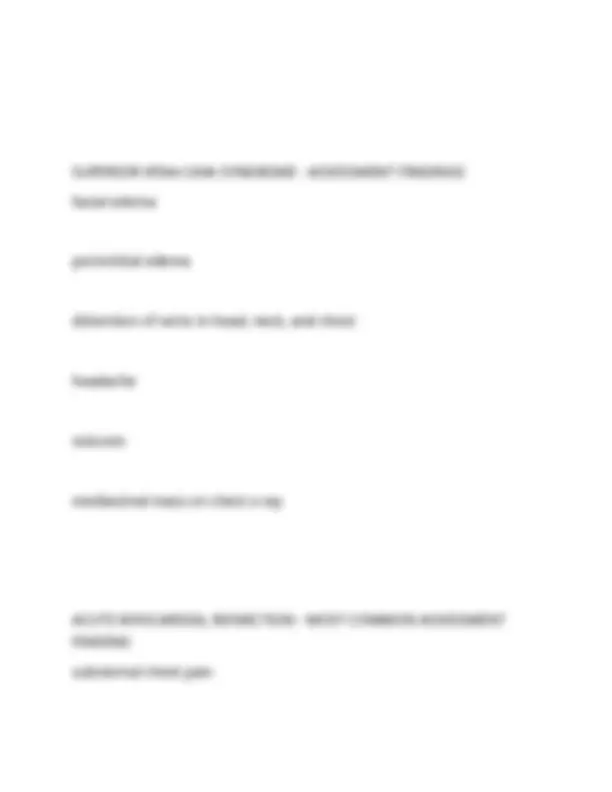
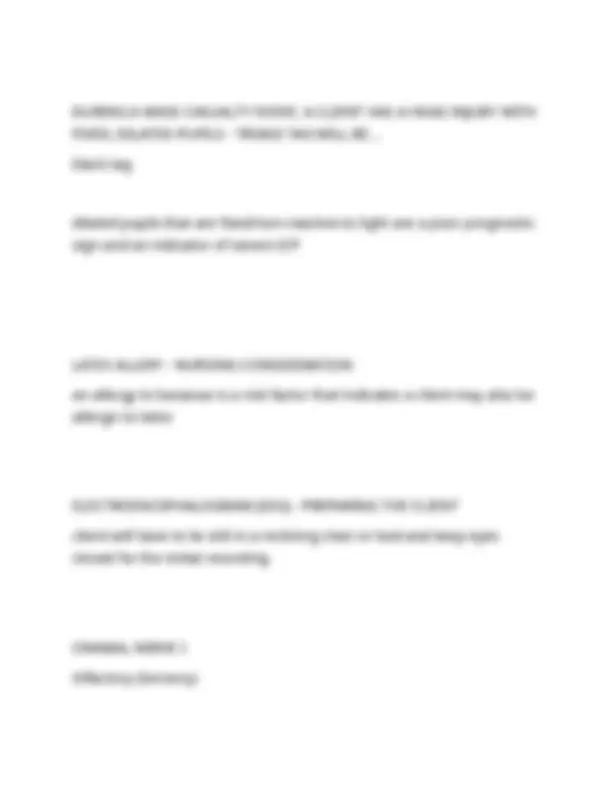

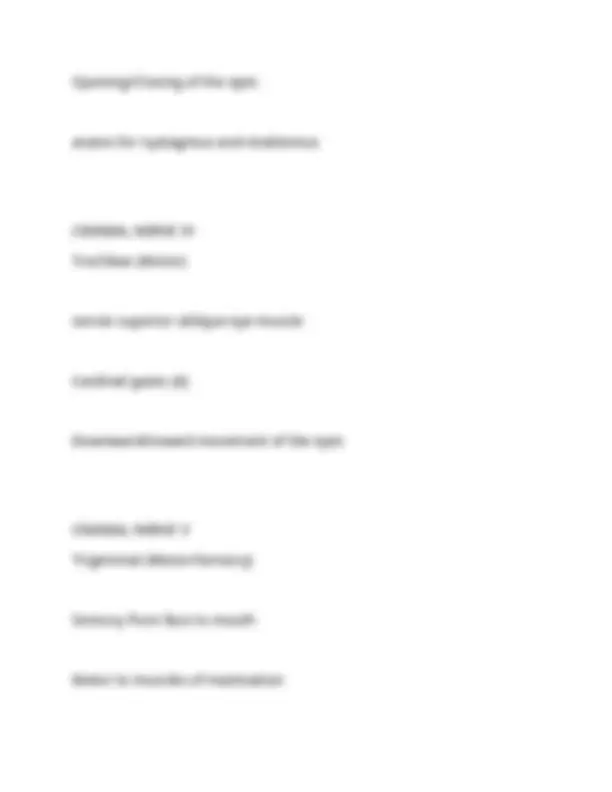
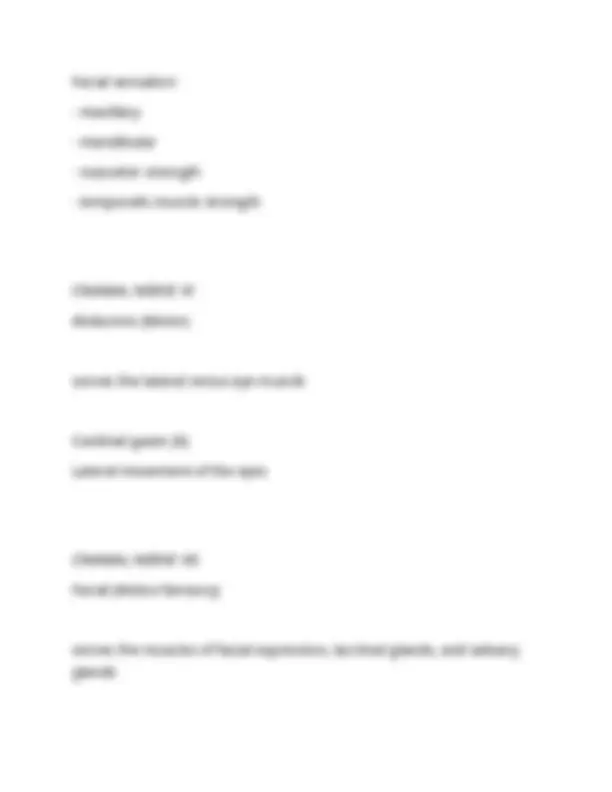
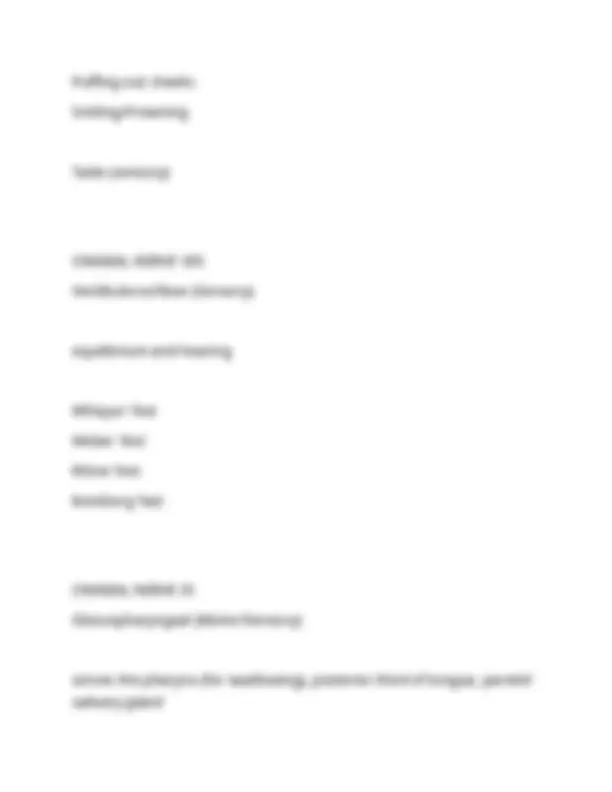
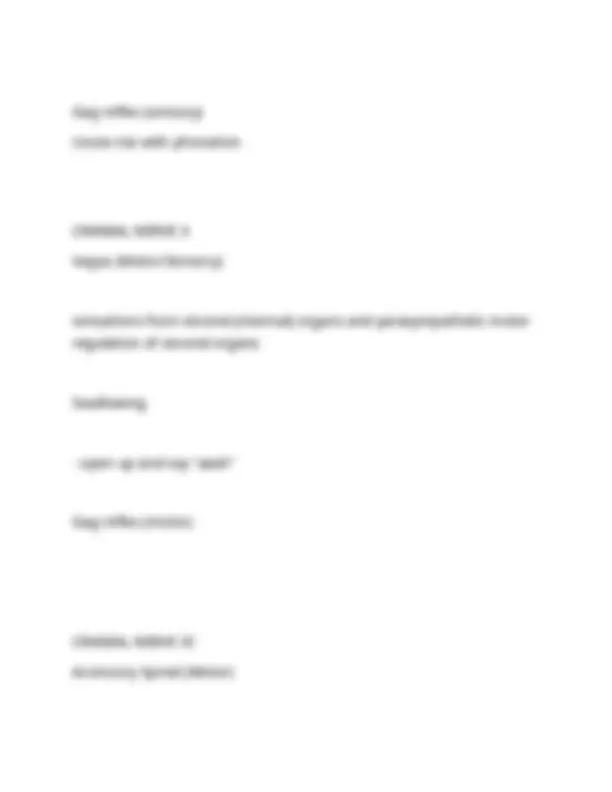
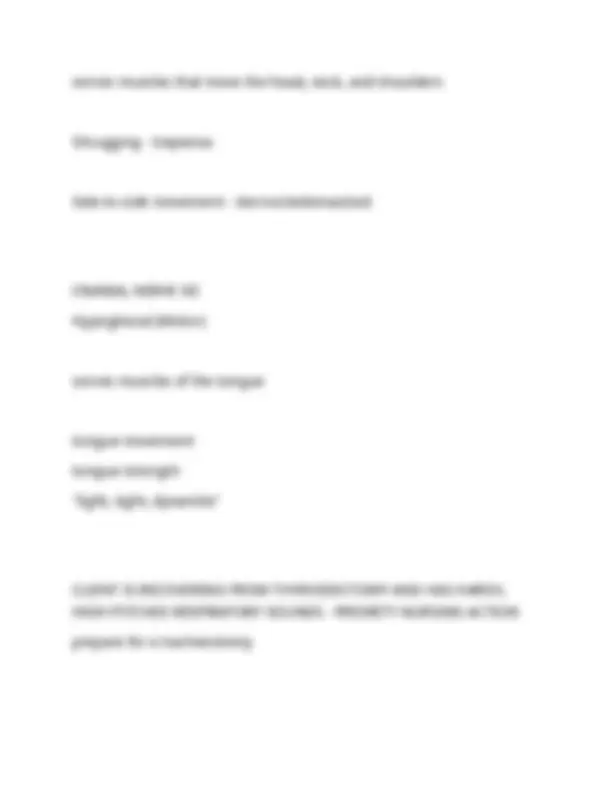
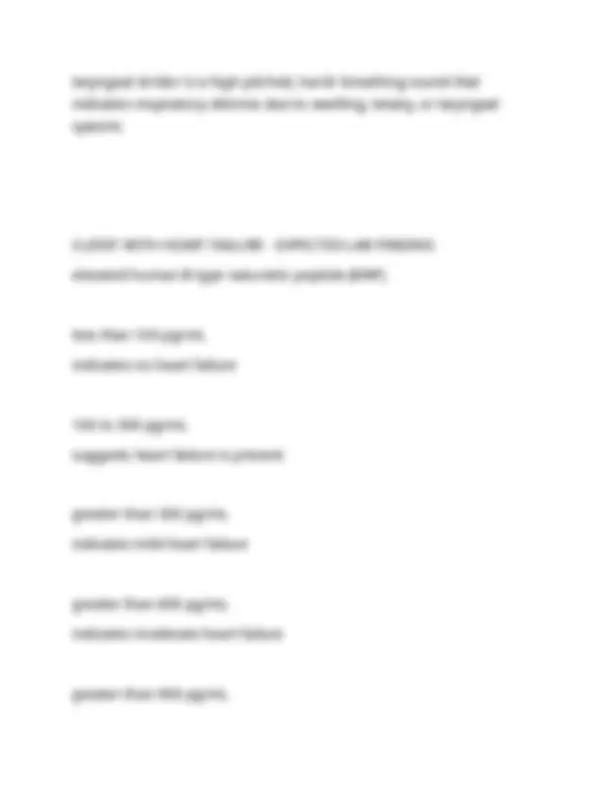
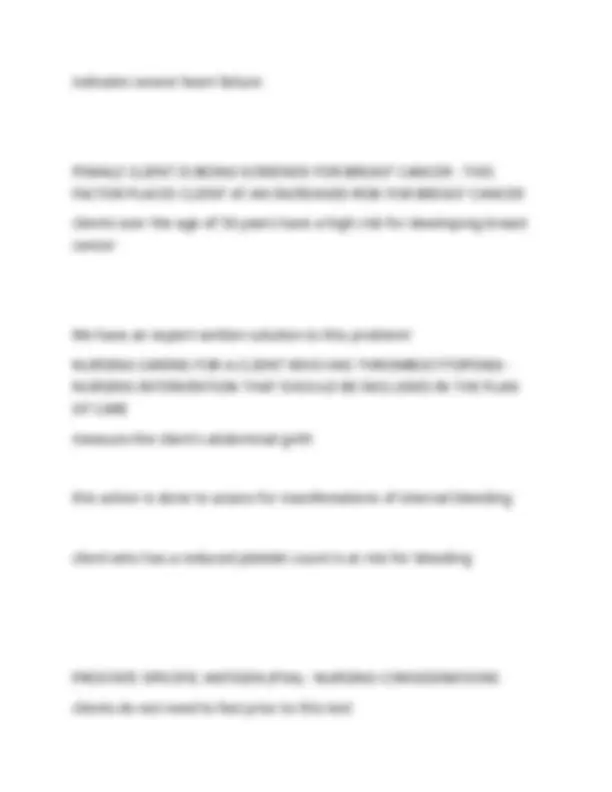
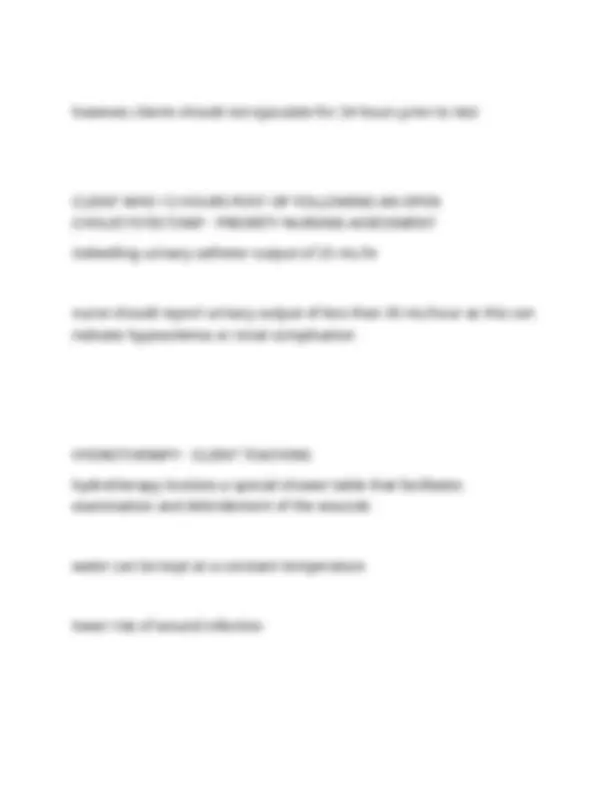
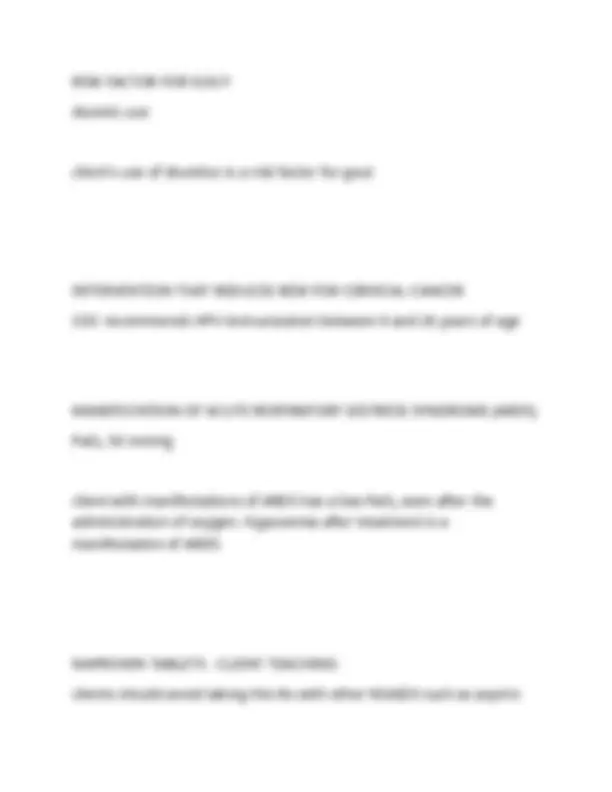



Study with the several resources on Docsity

Earn points by helping other students or get them with a premium plan


Prepare for your exams
Study with the several resources on Docsity

Earn points to download
Earn points by helping other students or get them with a premium plan
Community
Ask the community for help and clear up your study doubts
Discover the best universities in your country according to Docsity users
Free resources
Download our free guides on studying techniques, anxiety management strategies, and thesis advice from Docsity tutors
A compilation of questions and answers related to medical-surgical nursing, focusing on key concepts and interventions. It covers a range of topics, including postoperative care, risk factors for various conditions, medication administration, and patient teaching. The content is presented in a concise format, making it a useful resource for nursing students preparing for exams or seeking to reinforce their understanding of essential nursing principles. It includes information on topics such as radical mastectomy, total knee arthroplasty, bladder cancer, cardiac catheterization, burn injury, acute kidney injury, siadh, lasik surgery, amputation, pressure ulcers, peripheral vascular disease, liver biopsy, bacterial meningitis, chemotherapy, disseminated intravascular coagulation, cirrhosis, frostbite, hip fracture, dvt, cushing's syndrome, stomatitis, glaucoma, pernicious anemia, neck dissection, seizures, cerebrovascular accident, dehydration, osteoporosis and arthritis.
Typology: Exams
1 / 124

This page cannot be seen from the preview
Don't miss anything!





























































































begin exercises with the client 1 day after procedure exercises that do not stress the incision site can promote lymphatic return and mobility PRE-OPERATIVE TEACHING FOR A CLIENT SCHEDULED FOR TOTAL KNEE ARTHROPLASTY elastic stockings worn after surgery will help prevent venous embothrobolism BLADDER CANCER - HIGHEST RISK FACTOR tobacco use
client should remain flat for 2-6 hours following procedure client will receive mild sedative for relaxation/comfort client will need to keep the leg straight following the procedure CLIENT IS BEING ADMITTED WITH FREQUENT COUGHING, FROTHY PINK SPUTUM. CLIENT HAS Hx OF NIGHT SWEATS, ANOREXIA, AND WEIGHT LOSS - PRIORITY NURSING ACTIONS assign the client to a private, NEGATIVE-PRESSURE room initiate AIRBORNE precautions wear N95 mask when entering client's room PLANNING CARE FOR A CLIENT WHO HAS DEEP PARTIAL-THICKNESS BURNS OVER 40% OF HIS BODY AND IN THE ACUTE PHASE OF BURN INJURY - NURSING INTERVENTION THAT SHOULD BE INCLUDED IN THE PLAN OF CARE begin performing active/passive range of motion exercises with client
no urine output without renal replacement therapy for more than 3 months ACUTE INTRAVASCULAR HEMOLYTIC REACTION - ASSESSMENT FINDING sudden oliguria this type of transfusion reaction causes acute kidney injury (AKI) resulting in sudden oliguria and hemoglobinuria NURSING IS PLANNING CARE FOR CLIENT WITH SIADH WITH MILD SYMPTOMS - RX THAT WILL BE ANTICIPATED tolvaptan (Samsca) this Rx is a vasopressin antagonist that promotes the excretion of water
corrects the fluid imbalance in clients who have SIADH CHLORPROPAMIDE anti-diabetic agent with antidiuretic effects used to treat diabetes insipidus VASOPRESSIN exogenous form of antidiuretic hormone used to treat diabetes insipidus DEMOPRESSIN synthetic form of antidiuretic hormone used to treat diabetes insipidus
tremors an early manifestation of toxicity is CNS stimulation, often seen as tremors seizures can occur if blood levels continue to rise STAGE I PRESSURE ULCER skin is intact, with an area of persistent, non-blanchable redness usually over a bony prominence STAGE II PRESSURE ULCER involves partial-thickness skin loss of the epidermis and dermis ulcer is visible and superficial
can look like an abrasion, blister, or shallow crater STAGE III PRESSURE ULCER involves full thickness tissue loss with damage or necrosis of subcutaneous tissue damage might extend down to, BUT NOT THROUGH the underlying fascia looks like a deep crater STAGE IV PRESSURE ULCER full thickness tissue loss visible damage to muscle, bone and supporting structures sinus tracts, deep pockets of infection and tunneling may occur
elevated protein elevated WBC decreased glucose elevated CSF pressure cloudy CSF CLIENT IS RECEIVING CHEMOTHERAPY - ADVERSE EFFECTS THAT THE NURSE SHOULD ANTICIPATE pancytopenia pancytopenia (deficiency of WBCs, RBCs, and platelets) is an expected adverse effect of chemotherapy
pig skin heterografts are obtained from an animal, usually a pig CLIENT IS SCHEDULED TO HAVE ARTHROSCOPY - STATEMENT THAT INDICATES CLIENT UNDERSTANDS THE PREPROCEDURE TEACHING "the doctor will be able to see if I have signs of rheumatoid arthritis" arthroscopy helps with diagnosing musculoskeletal disorders such as rheumatoid arthritis, osteoarthritis and internal joint injuries A NURSE IS ASESSSING FOR DISSEMINATED INTRAVASCULAR COAGULATION (DIC) IN A CLIENT WITH SEPTIC SHOCK SECONDARY TO AN UNTREATED FOOT WOUND - EXPECTED ASSESSMENT FINDINGS bleeding at the venipuncture site
high protein diet
blisters do not appear client's muscles and bones are affected CLIENT WITH FRACTURED HIP HAS BEEN PLACED IN BUCK'S TRACTION
consume 1,000 mg of dietary calcium daily clients who are prone to the development of calcium oxalate stones should consume the RDA for calcium for their age calcium should be obtained from dietary sources rather than supplements A NURSE IS PLANNING CARE FOR A CLIENT WHO HAS CUSHING'S SYNDROME DUE TO CHRONIC CORTICOSTEROID USE - NURSING ACTION check the client's urine specific gravity to assess for fluid volume overload STOMATITIS - CLIENT TEACHING
avoid the use of lemon-glycerin swabs they cause drying and irritation of the mucous membranes PRIMARY OPEN-ANGLE GLAUCOMA (POAG) - CLIENT TEACHING driving can be dangerous due to the loss of peripheral vision laser surgery can help reestablish the flow of aqueous humor CLIENT WITH PERNICIOUS ANEMIA - SHOULD INCREASE CONSUMPTION OF THIS FOOD eggs client with pernicious anemia should increase consumption of foods rich in vitamin B Vitamin B12 is found in foods of animal origin
ease child to the floor in Sim's position (on the side) placing a client on their side helps reduce the risk of aspiration NURSE IS CARING FOR CLIENT DURING THE FIRST 72 HOURS FOLLOWING A CEREBROVASCULAR ACCIDENT (CVA) - PRIORITY NURSING ACTION elevate the HOB 25-30 degrees with client's head in a neutral midline position this helps to prevent increase in intracranial pressure PNEUMOCCOCAL IMMUNIZATION FOR OLDER ADULTS CDC recommends this immunization for people who are 65 years and older FOODS THAT HELP CALCIUM ABSORPTION fortified milk
fortified milk contains vitamin, which promotes calcium absorption ISOTONIC DEHYDRATION - EXPECTED FINDING increased hematocrit level due to hemoconcentration caused by reduced plasma fluid volume ELEVATED ST SEGMENT ON AN ECG - INDICATION ST-segement elevation during an acute myocardial infarction indicates injury/necrosis DISCHARGE TEACHING FOR A CLIENT WITH A NEWLY DIAGNOSED SEIZURE DISORDER in the event of a seizure, priority is to protect the client's head